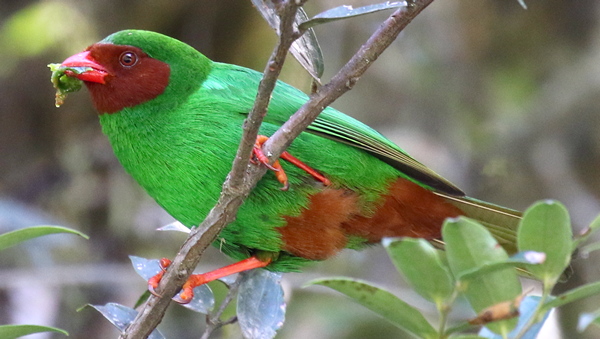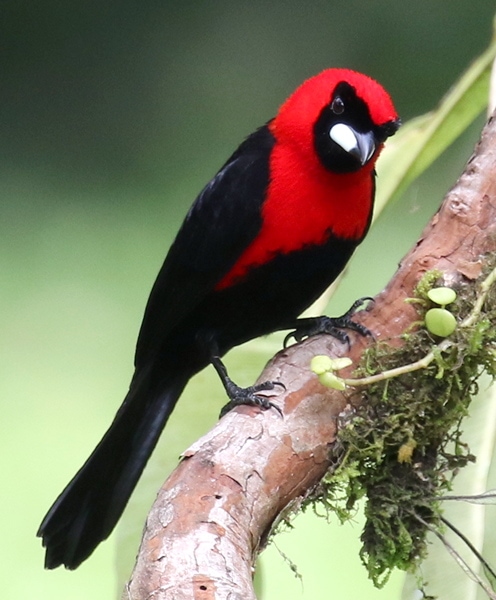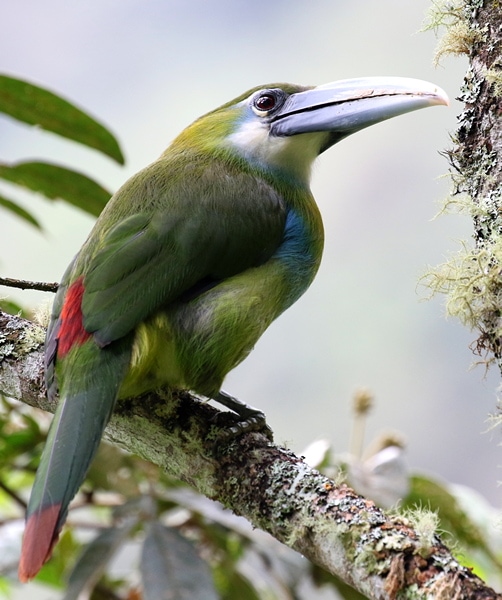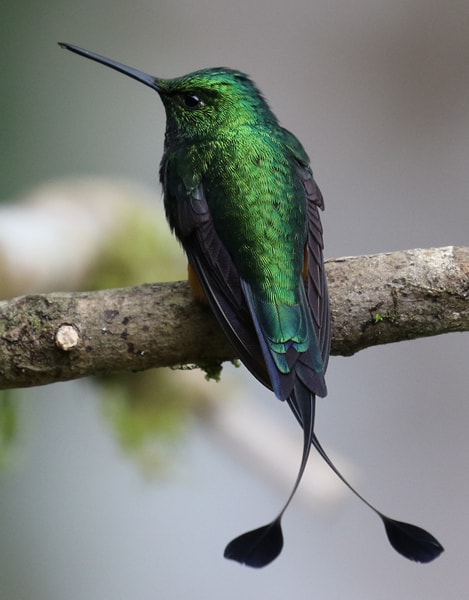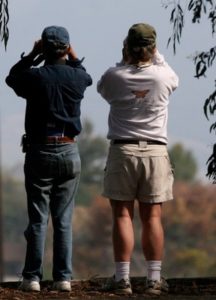On this page your can look back in time to view descriptions of our past programs.

Fleischmann Auditorium,
Santa Barbara Museum Of Natural History
2559 Puesta del Sol, Santa Barbara, CA
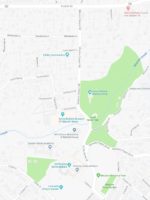
ALL AVAILABLE SEATS ARE RESERVED! Check back here for updates.
Due to the popularity of this event, advanced registration is required (with a two-ticket limit per registrant). This will be an open seating event, so we strongly recommend you arrive 20–30 minutes before the event begins to secure your seat. Plan on arriving early and allow sufficient time to park and walk to the venue. Please carpool if possible. Parking is limited and will not be permitted in the neighborhood near the Museum.
To Register starting Monday, April 22 at 9:00 a.m.
Visit the Museum’s calendar event page.
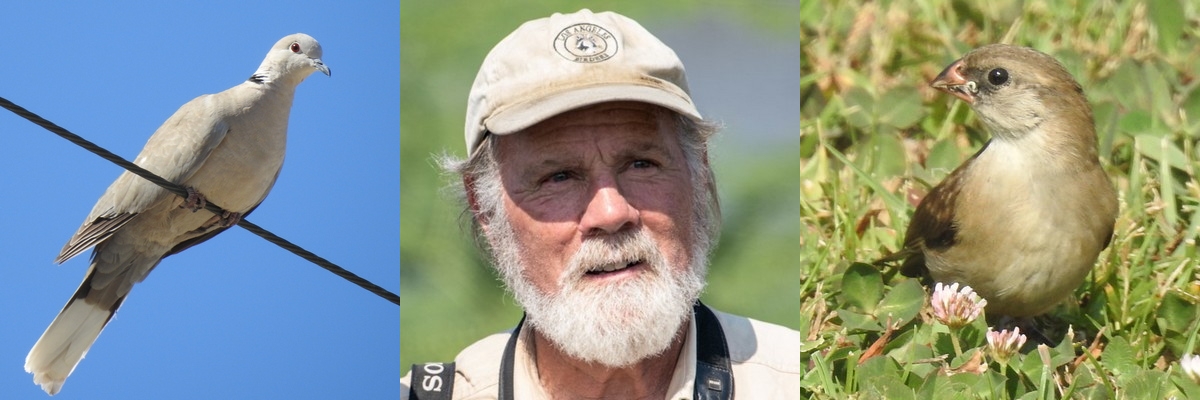
Fleischmann Auditorium,
Santa Barbara Museum Of Natural History
2559 Puesta del Sol, Santa Barbara, CA

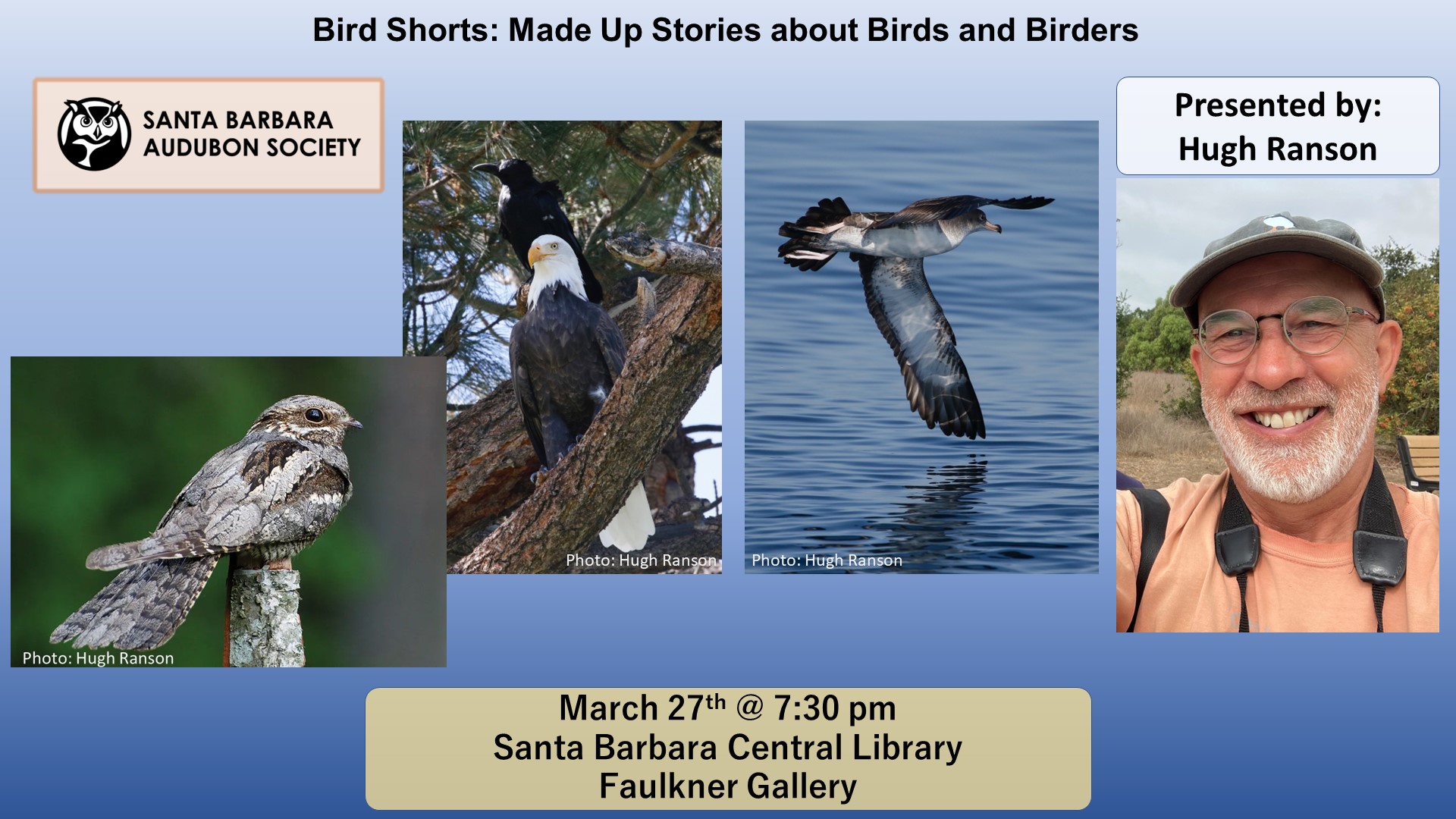
NEW Location:
Faulkner Gallery,
Santa Barbara Central Library
40 E Anapamu St, Santa Barbara, CA 93101


Location:
Farrand Auditorium,
Santa Barbara Museum Of Natural History
2559 Puesta del Sol, Santa Barbara, CA5

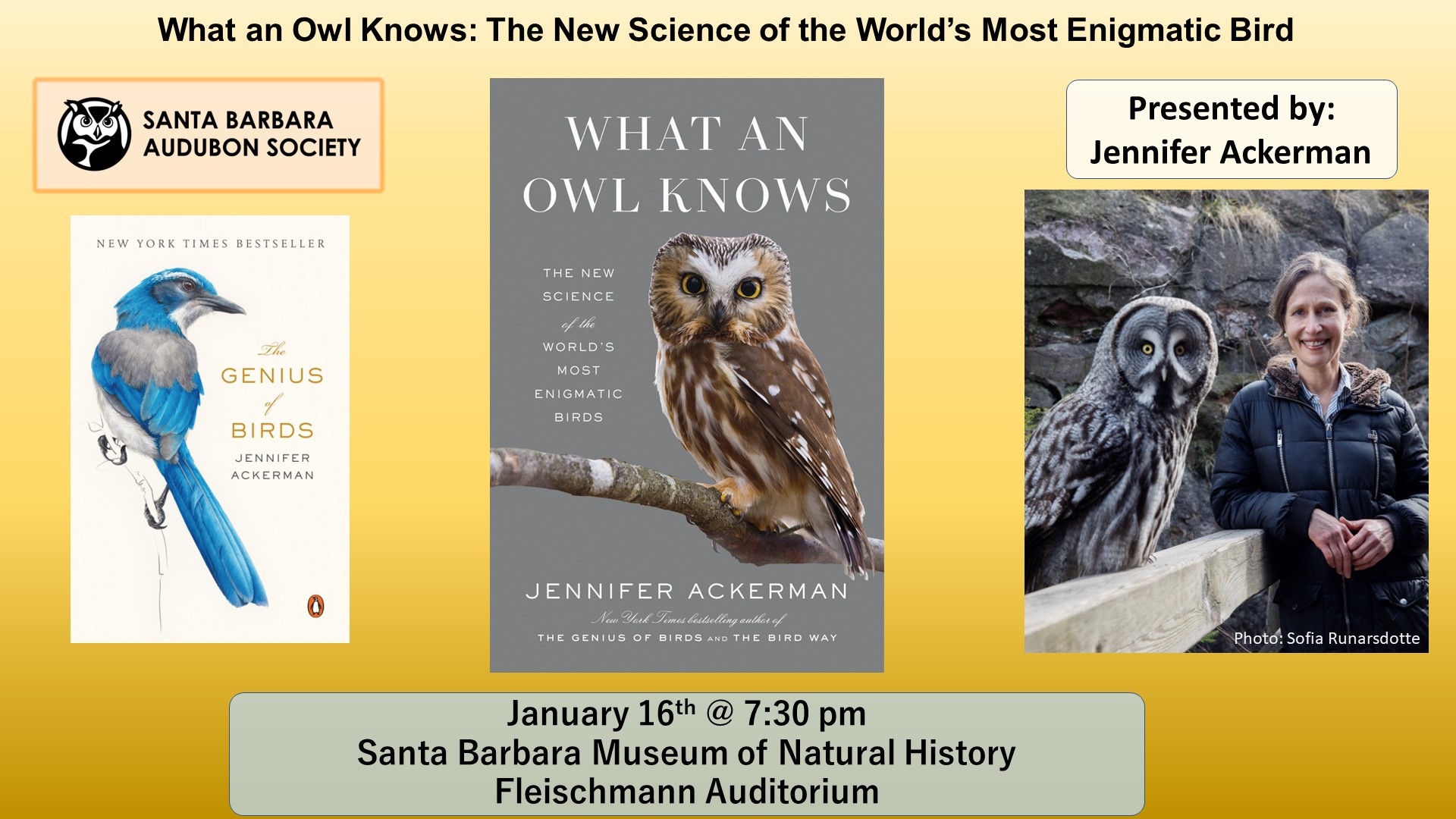
Location:
Fleischmann Auditorium,
Santa Barbara Museum Of Natural History
2559 Puesta del Sol, Santa Barbara, CA5


Location:
Farrand Hall,
Santa Barbara Museum Of Natural History
2559 Puesta del Sol, Santa Barbara, CA5

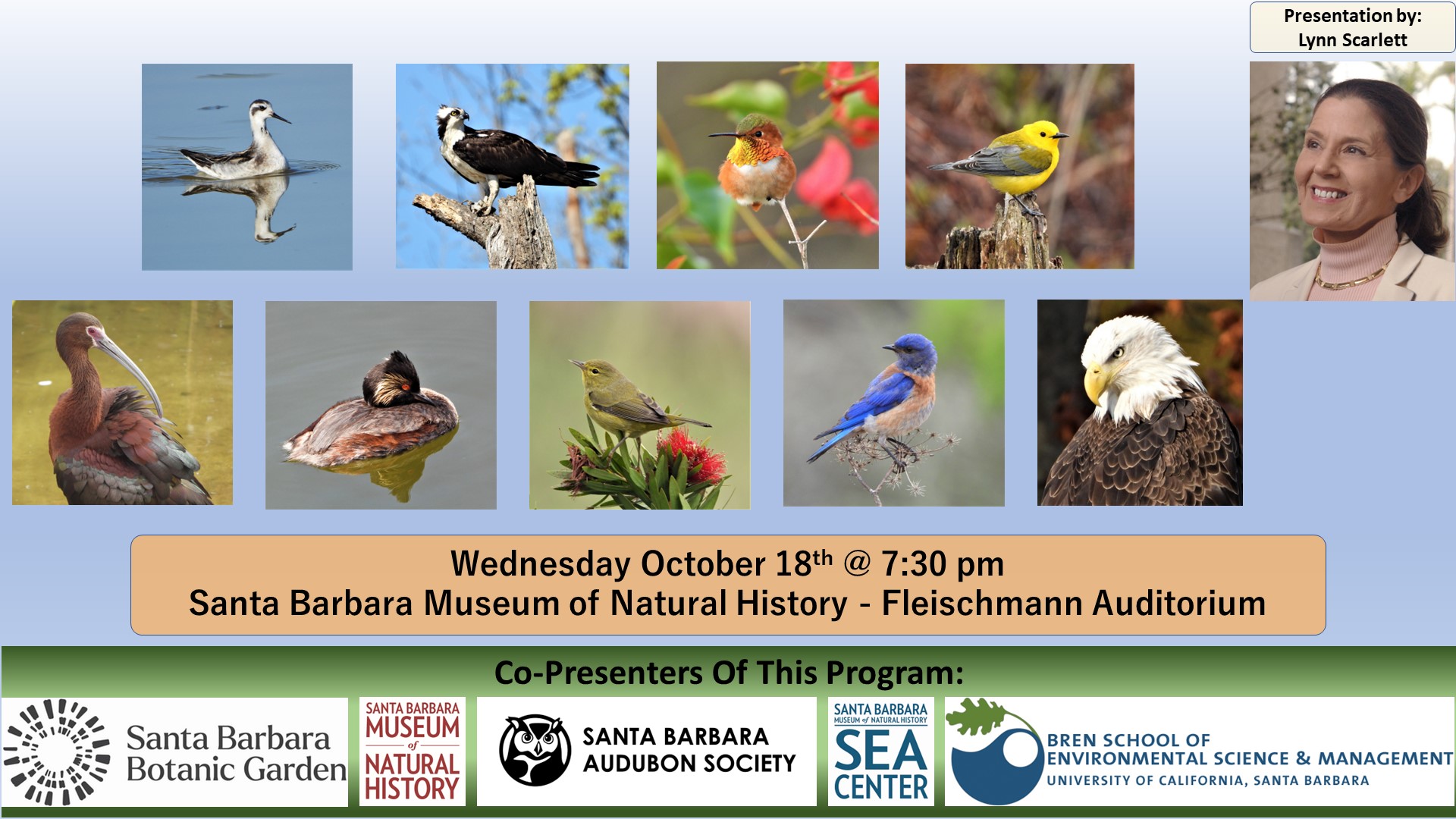
Location:
Fleischmann Auditorium,
Santa Barbara Museum Of Natural History
2559 Puesta del Sol, Santa Barbara, CA


Location:
Farrand Hall,
Santa Barbara Museum Of Natural History
2559 Puesta del Sol, Santa Barbara, CA


Location:
Farrand Hall,
Santa Barbara Museum Of Natural History
2559 Puesta del Sol, Santa Barbara, CA

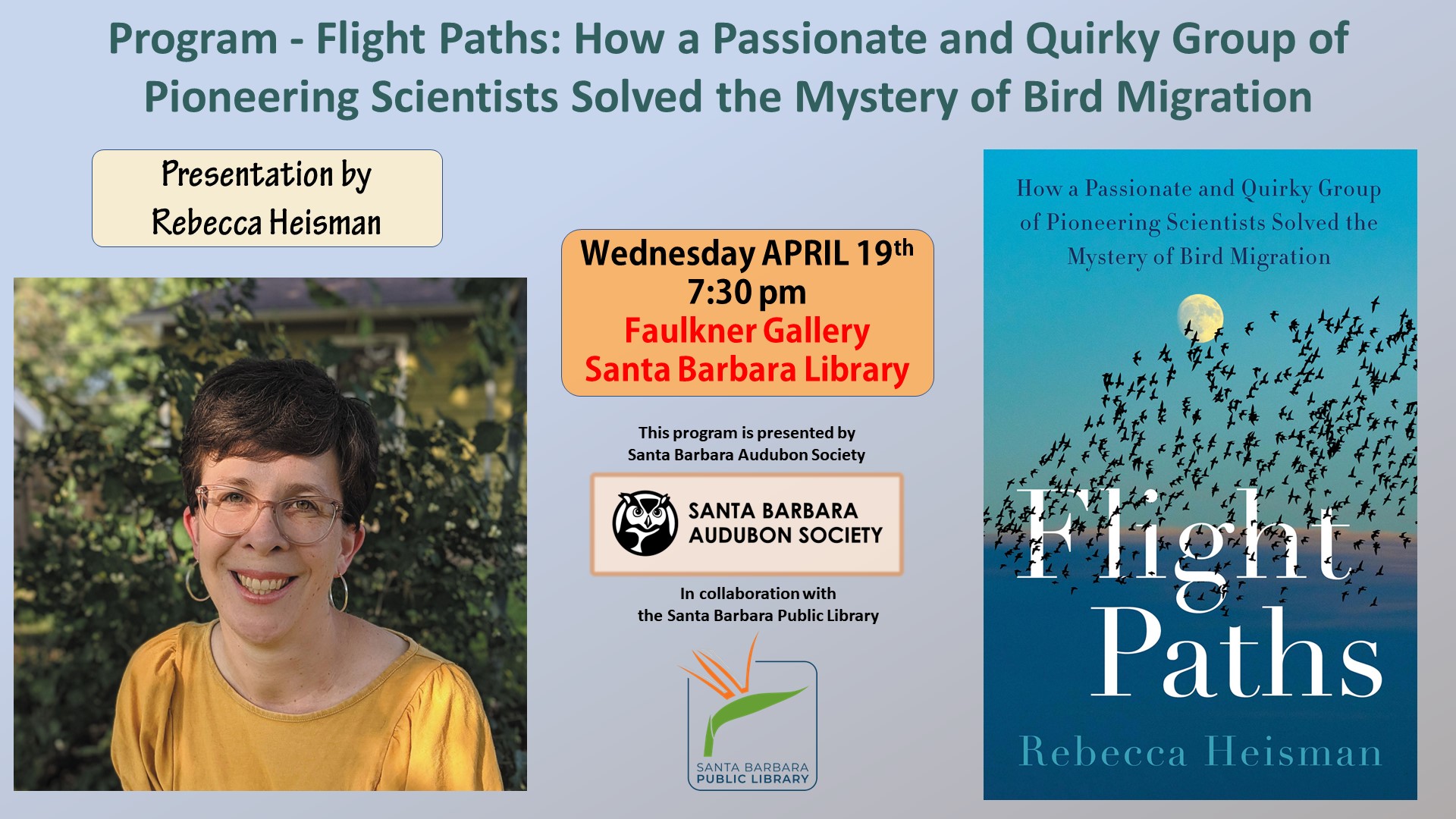
Location:
Faulkner Gallery,
Santa Barbara Central Library
40 E Anapamu St, Santa Barbara, CA 93101


This program will be via Zoom.
Meeting ID: 883 7449 5535
Passcode: 667316
Link: https://us02web.zoom.us/j/88374495535?pwd=YkNWRC84RUwxaytwU3lPRFZaOTR5dz09
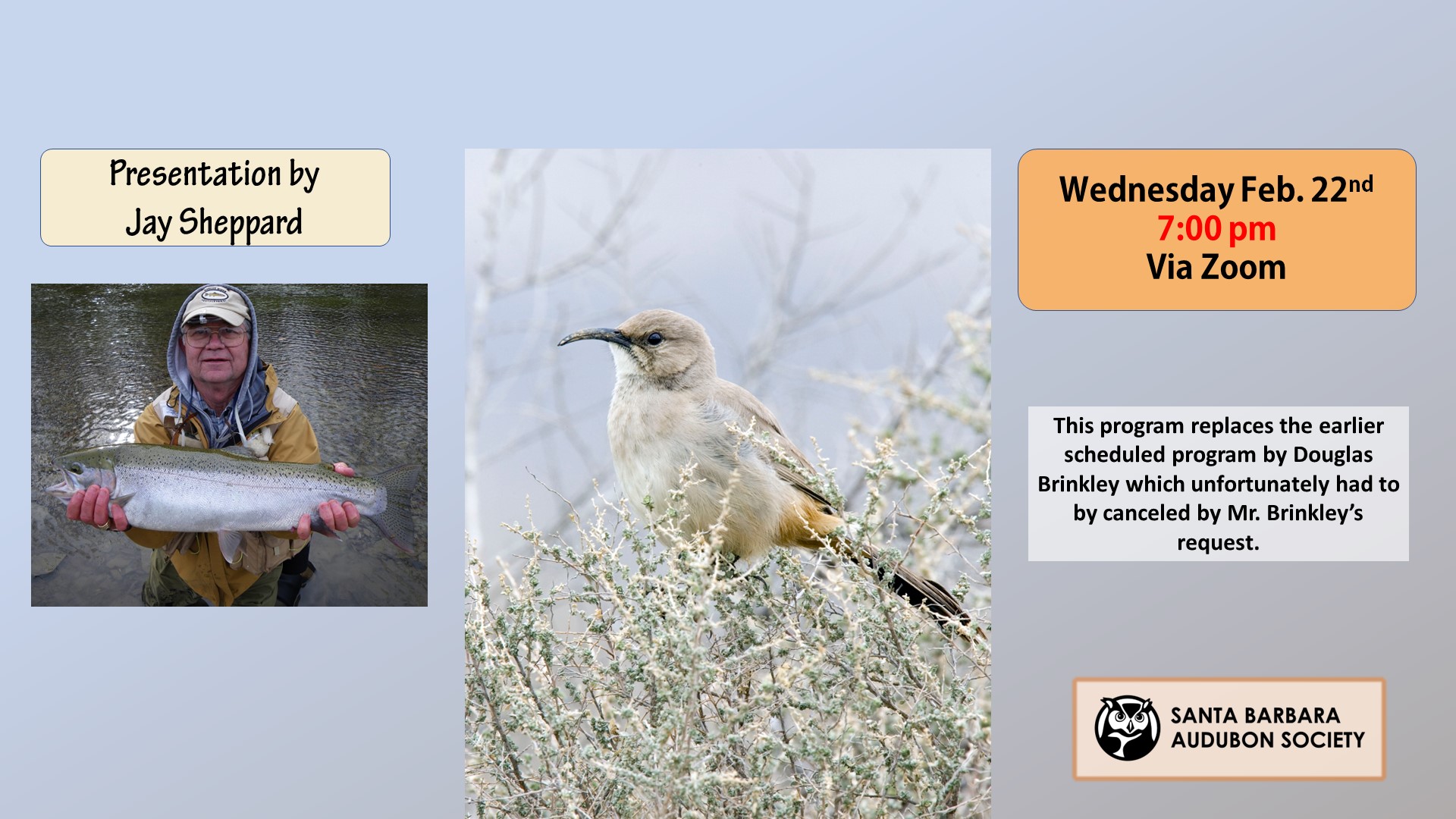
This program will be via Zoom. Note early start time of 7:00pm.
Meeting ID: 881 2954 7642
Passcode: 045496
Link: https://us02web.zoom.us/j/88129547642?pwd=T3E3TWR6czRHYk5WSXNxaXRFaEFzQT09
Location:
Fleischmann Auditorium,
Santa Barbara Museum of Natural History
2559 Puesta del Sol, Santa Barbara, CA 93105

The Douglas Brinkley program has been canceld
THIS PROGRAM has be CANCELED due to complications in Douglas Brinkley’s schedule that week. There is not currently a new date or a zoom. There will be an alternative program scheduled for February. More information when that event is in place.

Location:
Fleischmann Auditorium, Santa Barbara Museum of Natural History
2559 Puesta del Sol, Santa Barbara, CA 93105
Program Speakers:
Satie Airamé, Jeff Chemnick & Raphael E. F. Santos
 Home to 1,971 bird species, Brazil is a birding paradise with more than half of the species found in South America. Many of the world’s most interesting bird species live in Brazil’s patchwork of habitats, including more than 260 endemics that occur nowhere else on Earth. Some are colorful and gaudy birds such as parrots, macaws, and toucans. Others are elegant, glittering gems such as hummingbirds, jacamars, cotingas, and manakins.
Home to 1,971 bird species, Brazil is a birding paradise with more than half of the species found in South America. Many of the world’s most interesting bird species live in Brazil’s patchwork of habitats, including more than 260 endemics that occur nowhere else on Earth. Some are colorful and gaudy birds such as parrots, macaws, and toucans. Others are elegant, glittering gems such as hummingbirds, jacamars, cotingas, and manakins.
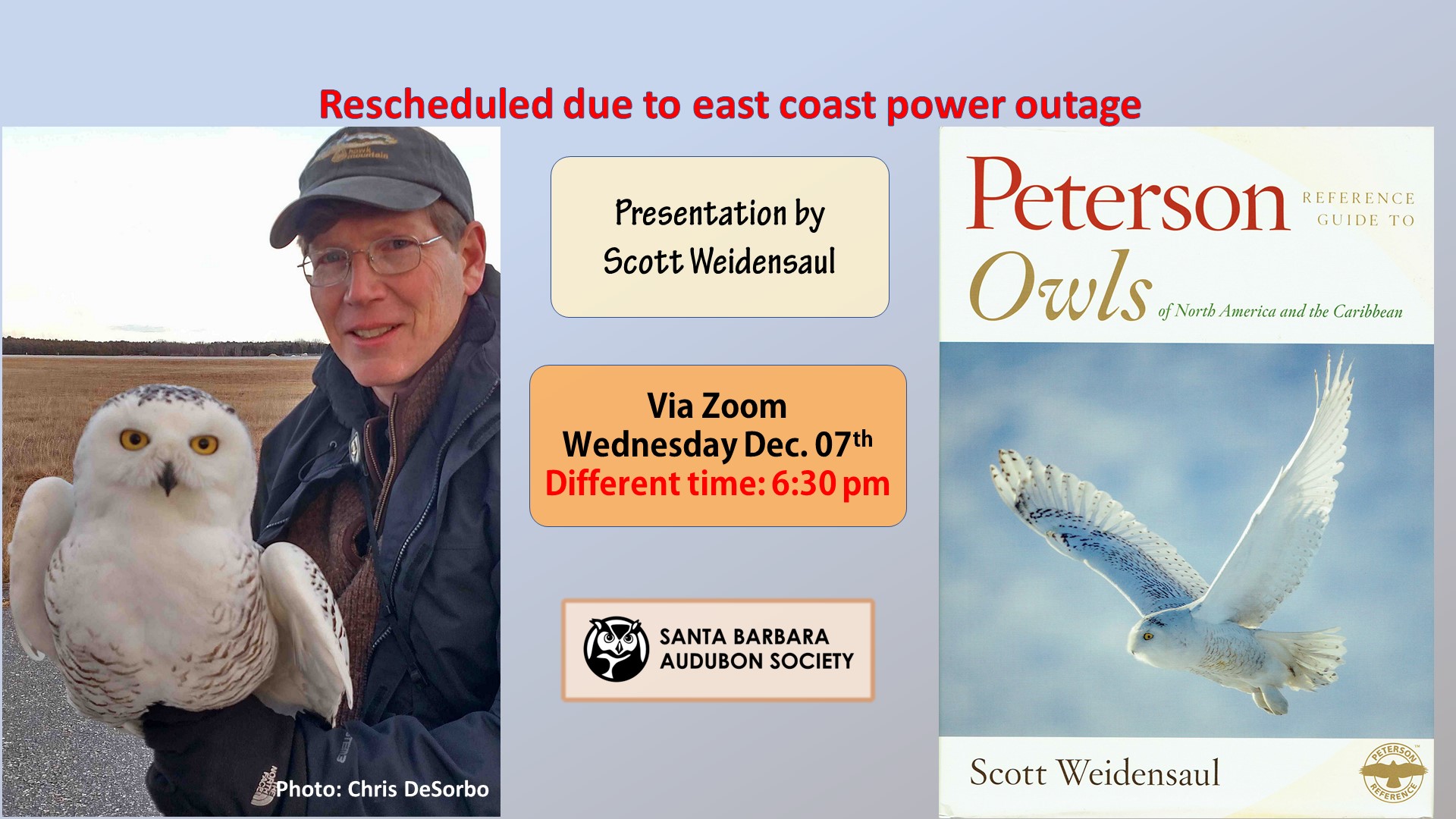
Location:
Via Zoom – EARLY START TIME! 6:30
Meeting ID: 878 9194 1033
Passcode: 418066
https://us02web.zoom.us/j/87891941033?pwd=TWZaTlZsY2ljMUUrK3dhWi9YNitaZz09
Re-scheduled due to power outage in the north-east on Nov 30.
This program is presented by the Santa Barbara Museum of Natural History & Sea Center and the Santa Barbara Audubon Society.
It is also presented in conjunction with the Museum’s Maximus Gallery exhibition:
A Parliament of Owls, October 7 thru February 5, 2023.
 Everyone loves the beauty, mystery and charm of owls, but science is still unlocking many of the
Everyone loves the beauty, mystery and charm of owls, but science is still unlocking many of the
secrets of owl biology and ecology. Join Scott Weidensaul, author of the Peterson Reference Guide to
Owls of North America and the Caribbean, for an exploration of the weird and little-known world of
these nocturnal hunters, and the exciting new discoveries being made not only about tropical species
like the stygian owl, but even the most common and widespread owls in American backyards.

Location:
Fleischmann Auditorium, Santa Barbara Museum of Natural History
2559 Puesta del Sol, Santa Barbara, CA 93105
Masks will be required at this event!

Jack E. Davis is the Pulitzer Prize–winning author of The Gulf: The Making of An American Sea and An Everglades Providence: Marjory Stoneman Douglas and the American Environmental Century.
Davis holds the Rothman Family Chair in the Humanities at the University of Florida where he teaches environmental history and sustainability studies.
This illustrated lecture is a presentation of UCSB Arts & Lectures, the Santa Barbara Museum of Natural History and Santa Barbara Audubon Society.
This event is free to the public BUT ADVANCED REGISTRATION IS RECOMMENDED!
There are no tickets currently available for this event. Very limited seating may become available at the door the night of the event.
See the bottom of this listing for a link to register for this event.
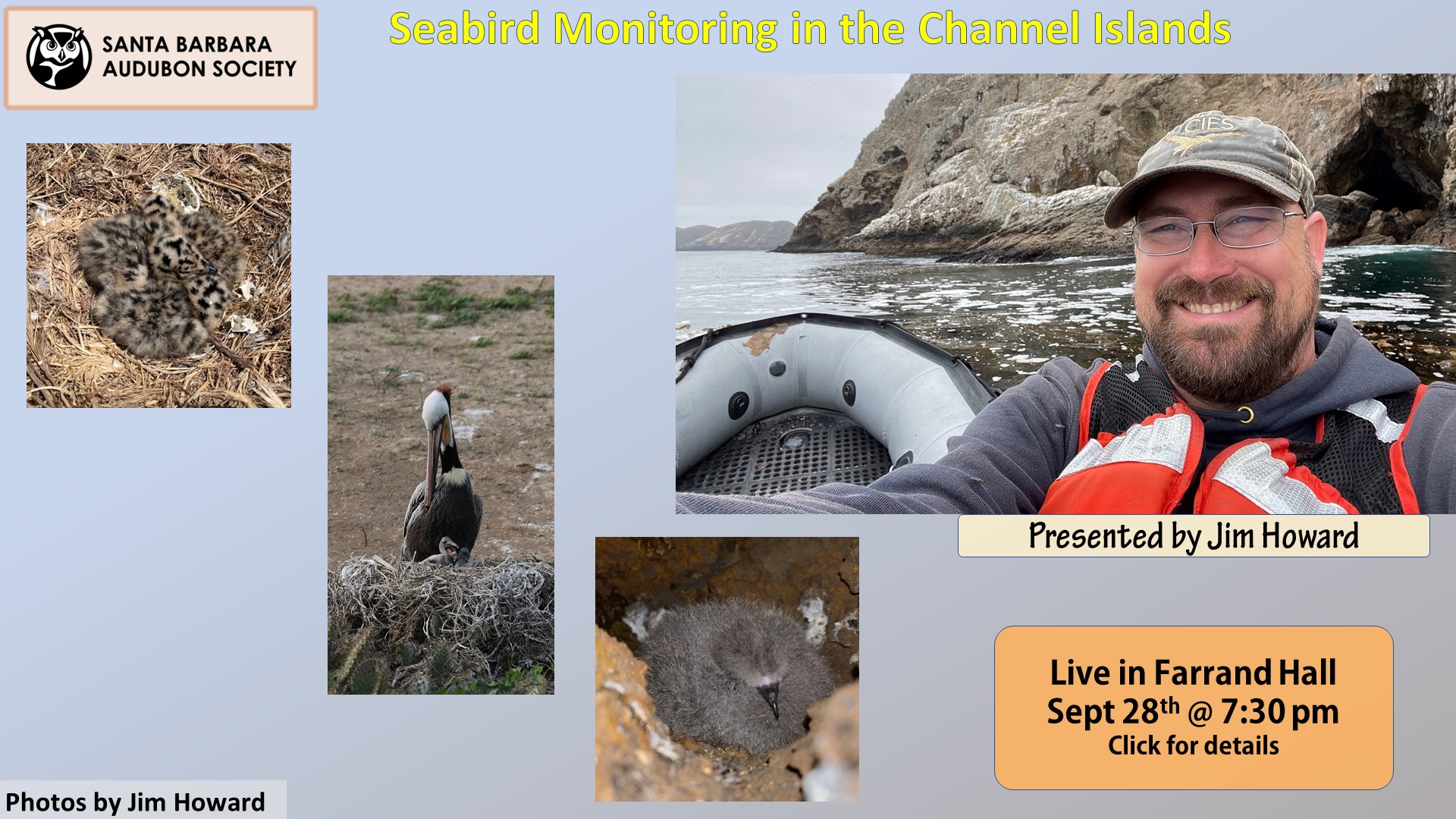
Location:
Farrand Hall, Santa Barbara Museum of Natural History
2559 Puesta del Sol, Santa Barbara, CA 93105
California Institute of Environmental Studies (CIES) works with the National Park Service and other cooperators to restore native habitat and monitor seabird species on the Channel Islands. Jim will discuss some of the interesting trends and highlights from the seabird monitoring work we have done over the last several years, from the majestic Western Gulls of Anacapa to the secretive Ashy Storm-petrels nesting in the cliffs and sea caves at Santa Cruz and Santa Barbara Islands.
Via ZOOM – Meeting ID: 838 8901 7544 Passcode: 849187 – Meeting Link
 This talk will focus on Jayden’s experiences in the field with hummingbirds and shorebirds, and he will answer questions such as: “how can I photograph these animals” and “how can I observe these animals ethically (with and without a camera, what locations can I see these animals, etc.). He will also cover his opportunities at the LA Zoo and the Zoo Magnet program he attends.
This talk will focus on Jayden’s experiences in the field with hummingbirds and shorebirds, and he will answer questions such as: “how can I photograph these animals” and “how can I observe these animals ethically (with and without a camera, what locations can I see these animals, etc.). He will also cover his opportunities at the LA Zoo and the Zoo Magnet program he attends.
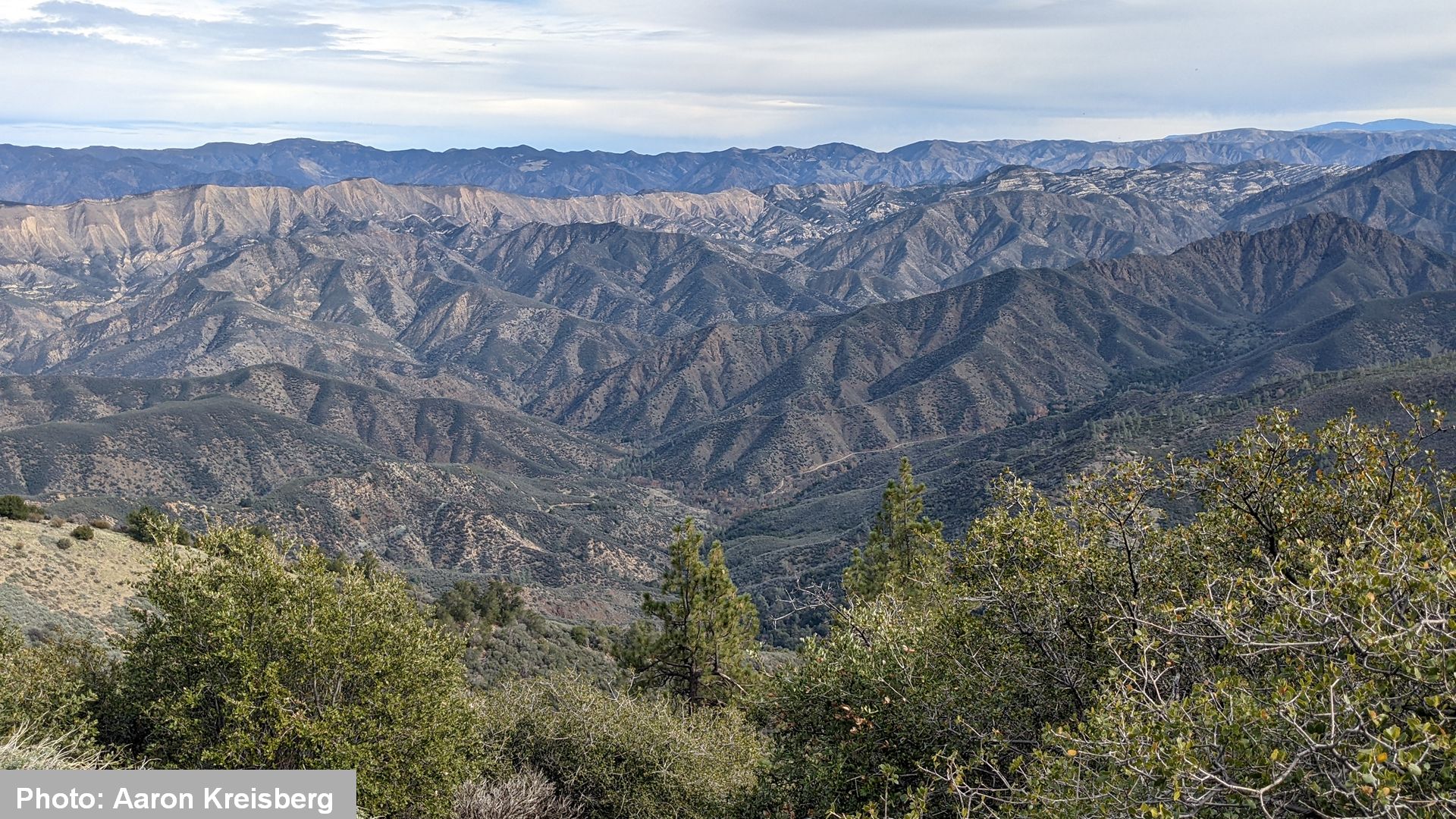
Via ZOOM – Meeting ID: 822 2856 1684 Passcode: 853305 – Meeting Link
Santa Barbara District Ranger Daryl Hodges will provide an update on projects occurring within the Los Padres National Forest, including projects concerning natural resources, habitat, and recreation. Los Padres National Forest is one of the larger national forests in the continental United States, spanning nearly 3,000 square miles and stretching from Monterey County in the north to Ventura County in the south, with significant amounts of Santa Barbara County part of the forest. From front country trails behind Santa Barbara to backcountry locations in and accessed via the Santa Ynez Valley, the Santa Barbara District covers a diverse range of habitats. The district supports several rare and protected species, including California Spotted Owl, Golden and Bald Eagles, and also the historic range of the California Condor. Major current projects include aquatic organism passage improvements, post-fire management, and ongoing maintenance projects.
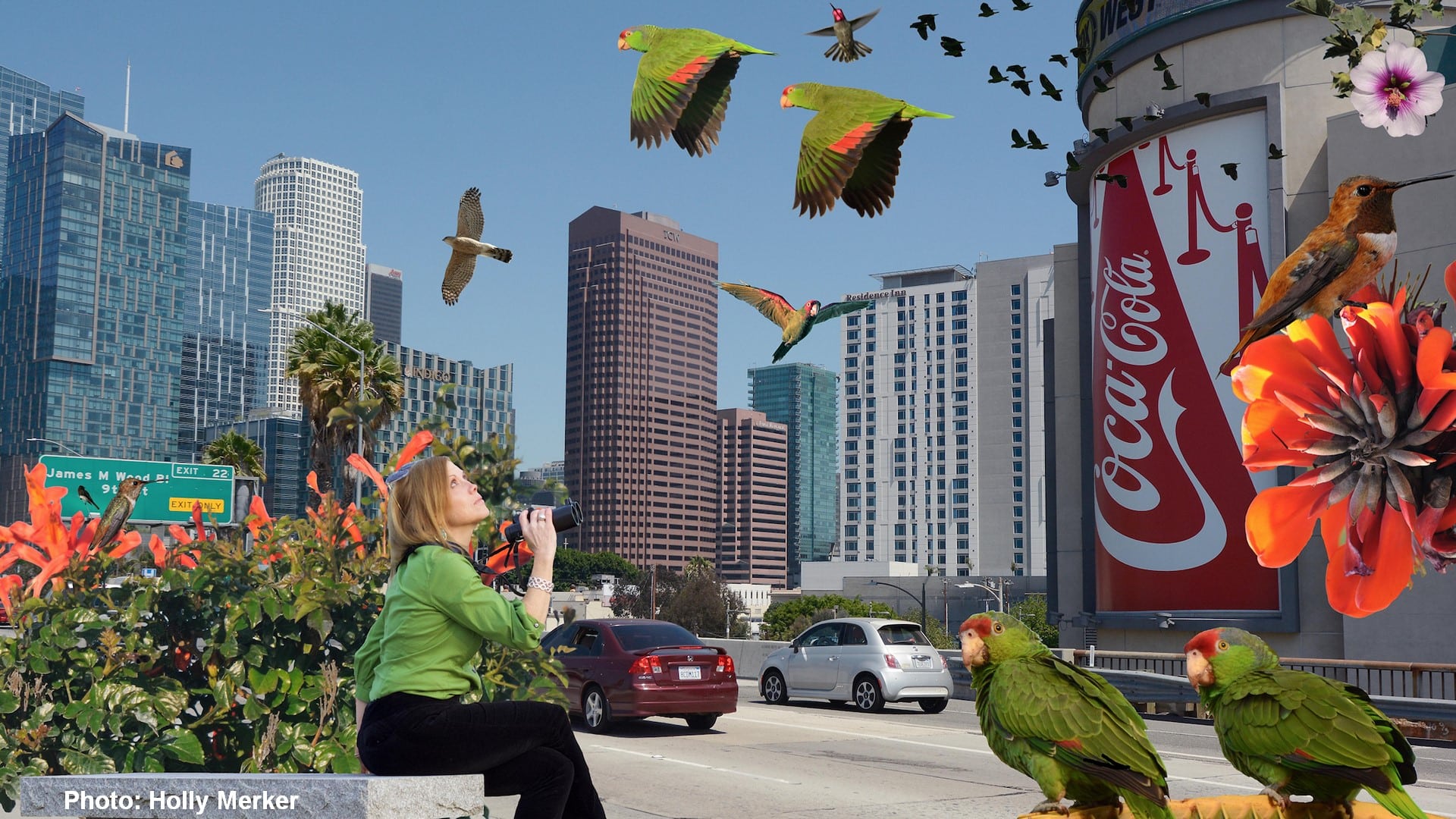
Via ZOOM – Meeting ID: 896 1221 8301 Passcode: 503580 – Meeting Link
 Watching birds: not only fun, but good for you!
Watching birds: not only fun, but good for you!
Learn why getting your daily dose of Ornitherapy is just what the doctor ordered…. Ornitherapy leads to a more mindful approach to the observation of birds, benefits our mind, body, and soul. We’re pushed and pulled in many directions, no matter our age. If we allow birds and nature to slow us down, we are practicing a form of “selfcare”. Research shows that exposure to nature actively reduces stress, depression, and anxiety, while helping build a stronger heart and immune system.

For the past five years, the Environmental Defense Center has been engaged in conversations with state and federal agencies, industry, and partnering nonprofits (including the Audubon Society) about proposals for offshore floating wind along the Central Coast. In this discussion, Kristen will provide an overview of the potential for offshore wind to help our communities achieve carbon neutrality goals, as well as the need to avoid impacts to marine and coastal resources. Specifically, this discussion will focus on a proposal about 20 miles offshore Morro Bay, and two proposals in nearshore waters off Pt. Arguello near Vandenberg Air Force Base.
Via ZOOM – Meeting ID: 851 0941 8479 Passcode: 073412 – Meeting Link
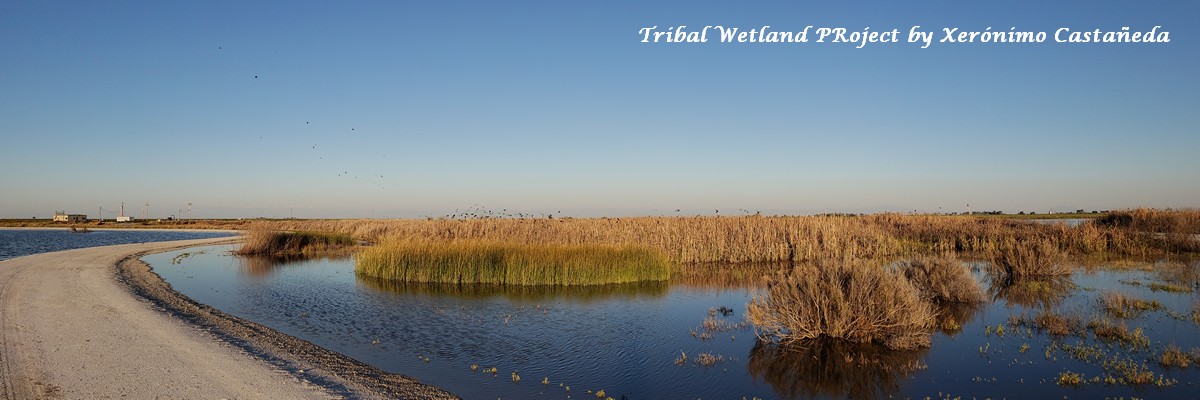
Xerónimo Castañeda will talk about the conservation projects he is working on with Audubon California, focused on habitat restoration and enhancement, developing multi-benefit management progams for Central Valley wetlands, agricultural operations, and groundwater recharge projects, to benefit birds and people.
Via ZOOM – Meeting ID: 838 4304 7977 Passcode: 100289 – Meeting Link

Program Description
The Pacific coast population of the Western Snowy Slover is a federally listed threatened species. One of the major threats to the plovers is disturbance of their sandy beach breeding habitat due to human use of that habitat. In southern California especially, heavy public use of the beach during the birds’ March through September breeding period has led to many historic nesting sites being abandoned. Although Snowy Plovers previously bred at Carpinteria State Beach, the birds had not done so since 1960. In this talk John will share the story of the successful nesting by Snowy Plovers in Carpinteria in 2021, including photos and videos of the birds and a discussion of the human efforts that helped them succeed.
 Presented by John Callender
Presented by John Callender
John Callender is a computer programmer who lives in Carpinteria. He has been a birdwatcher since childhood, and in recent years has focused mostly on Santa Barbara County birding. He is the founder of Carpinteria Birdwatchers, the current organizer of the Carpinteria Christmas Bird Count, and the program chair of the upcoming Carpinteria Living Shoreline Festival.
Presentation will be via Zoom
Meeting ID: 838 4240 7049
Passcode: 129210
Or Join Zoom Meeting with your web browser at:
https://us02web.zoom.us/j/83842407049?pwd=M2Z2VGwyMFIybkJ6TDllcW0rdkFQQT09
For proper viewing, the Zoom desktop application version must be at 5.2.3 or greater!
As of 8/16/2021, 5.7.5 is the current Zoom version.
Sponsored By Santa Barbara Audubon Society

Program Description
In 2006, during Chuck Graham’s first trip to the Carrizo Plain National Monument, the landscape of “California’s Serengeti” captured his imagination. However, he didn’t envision he would self-publish a photo book of these stunning grasslands 15 years later. He now has a collection of images from the last of California’s grasslands, time spent in the field chasing light, patiently waiting for wildlife to emerge and anticipating the next Super Bloom. The publication of “Carrizo Plain-Where the Mountains Meet the Grasslands” coincided with the 20-year anniversary of the National Monument in January 2021.
 Presented by Chuck Graham
Presented by Chuck Graham
Chuck Graham is a freelance writer and photographer who has spent the last 15 years photographing the last of California’s semi-arid grasslands- the Carrizo Plain National Monument. His devotion to this unique grassland biome culminated into his first book, Carrizo Plain, Where The Mountains Meet The Grasslands in November 2020. His work has also appeared in National Geographic for Kids, National Geographic Books, Natural History, American Forests, BBC Wildlife Magazine, Canoe & Kayak, Backpacker and the Washington Post.
Presentation will be via Zoom
Meeting ID: 849 2252 9223
Passcode: 147145
Or Join Zoom Meeting with your web browser at:
https://us02web.zoom.us/j/84922529223?pwd=VUZUOHVVK1BqcVdKTDZsLzV5cWgrUT09
For proper viewing, the Zoom desktop application version must be at 5.2.3 or greater!
As of 8/16/2021, 5.7.5 is the current Zoom version.
Sponsored By Santa Barbara Audubon Society
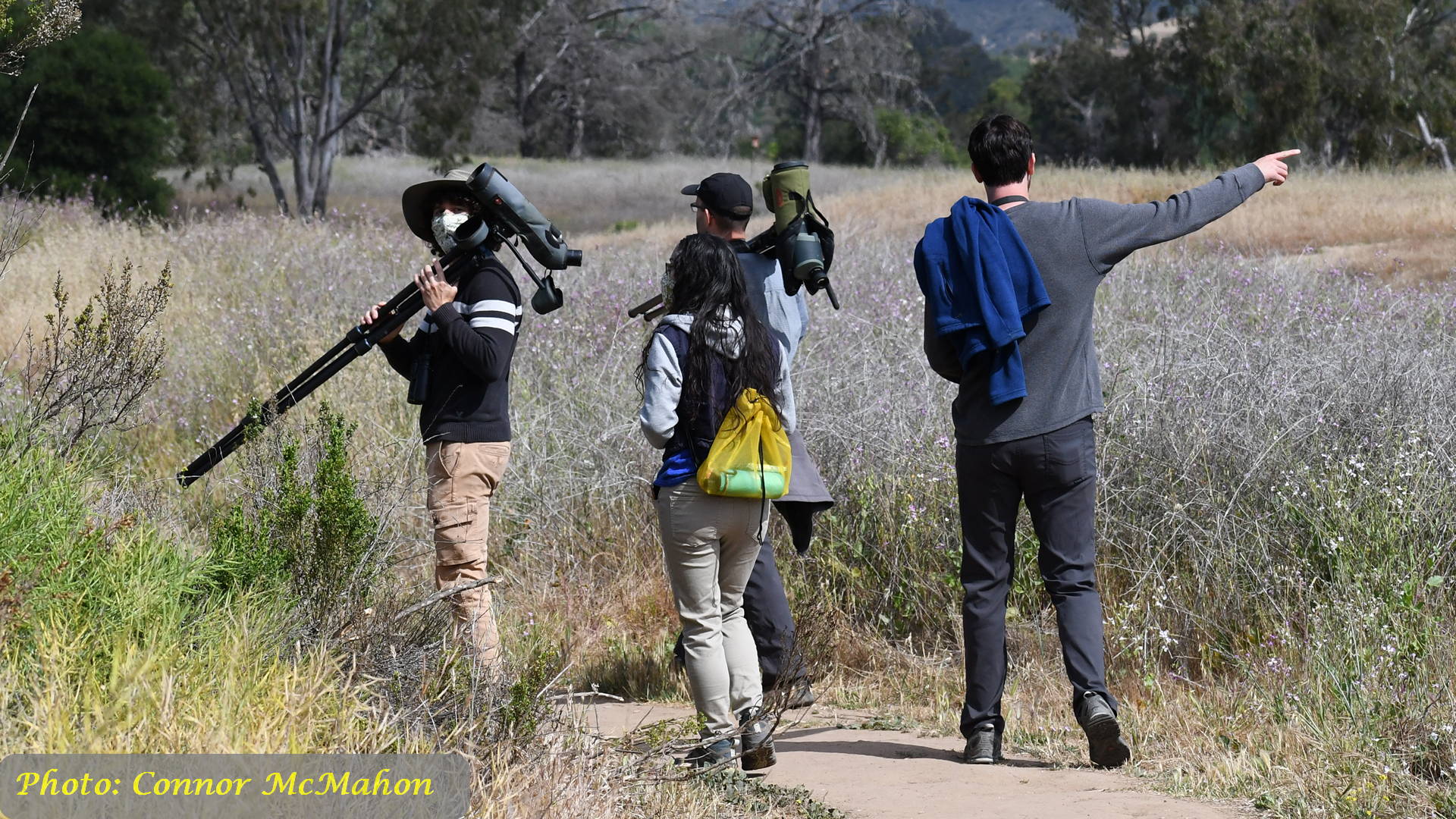
Program Description
Tonight’s program will explore Goleta Coast Audubon Society’s (GCAS) initial projects, present activities, and future opportunities to engage students with birds and conservation related issues. GCAS is UCSB’s birdwatching and conservation club, founded in 2019. GCAS is actively working towards connecting the UCSB student population with birding and conservation in the wider Santa Barbara region and beyond. GCAS is a registered campus organization at UCSB and an official campus chapter of the National Audubon Society. GCAS membership is composed of both undergraduate and graduate students, and the chapter organizes birding walks, conservation projects, and advocacy initiatives. GCAS’s mission is to protect wildlife and the habitat it needs to thrive, while engaging and educating students and the public on science and conservation issues pertaining to birds.
 Presented by Conor McMahon
Presented by Conor McMahon
Conor McMahon is a graduate student in the Geography Department at the University of California, Santa Barbara and the President of GCAS. Conor grew up in Houston, TX, and was introduced to birding in an ornithology course at the University of Texas at Austin. He quickly became hooked and has since been lucky to bird widely in the US, but especially in Texas and Southern California. After receiving a Bachelors of Science in Biology and Mechanical Engineering from UT, he had the opportunity to teach the same course which got him started birding in 2019 during his Masters. Moving to Goleta and UCSB in 2019, he became active in Santa Barbara Audubon’s Conservation Committee and founded GCAS in 2020. He has since helped start several ongoing GCAS conservation initiatives and is always looking for ways to introduce new people to the birding community.
Presentation will be via Zoom
Meeting ID: 844 7469 6404
Passcode: 942865
Or Join Zoom Meeting with your web browser at:
https://us02web.zoom.us/j/84474696404?pwd=dWI3UlBZNC9BR1I1eU9HNjZkcDJZQT09
For proper viewing, the Zoom desktop application version must be at 5.2.3 or greater!
As of 8/16/2021, 5.7.5 is the current Zoom version.
Sponsored By Santa Barbara Audubon Society
Eared Grebe Migration and the Lakes They Depend on
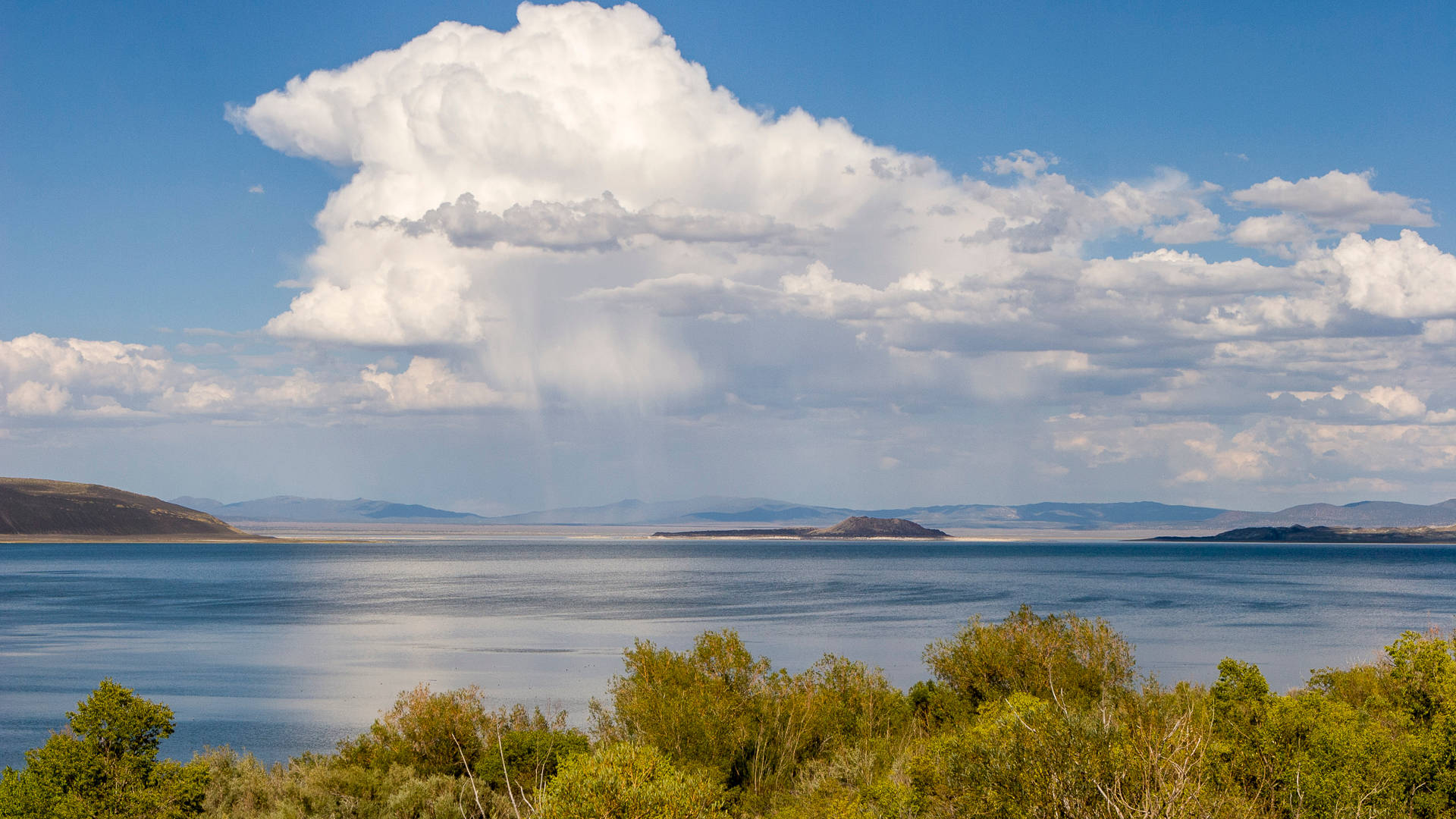
Presentation will be via Zoom.
For proper viewing of the program the desktop application version must be at 5.2.3 or greater!
Version 5.5.2 is the current version available as of 2/20/2021.
Meeting ID: 882 4912 7436
Passcode: 419683
Or Join Zoom Meeting with your web browser at:
https://us02web.zoom.us/j/88249127436?pwd=S3ZSNmdhTXkyWWtuSFRjR2JFczVYQT09
Presented by Nora Livingston

Test Text
Test Text
Eared Grebes populate western saline lakes like Mono Lake and the Salton Sea by the millions during their southward migration, but these lakes are in danger due to excessive water diversions and climate change. Learn about the magnificent Eared Grebe and the lakes that it depends on with presenter Nora Livingston.
 Nora Livingston is the Mono Lake Committee’s Lead Naturalist Guide. She gives presentations around the state about Mono Lake and birds, and leads custom guided trips at Mono Lake for birders and nature-enthusiasts.
Nora Livingston is the Mono Lake Committee’s Lead Naturalist Guide. She gives presentations around the state about Mono Lake and birds, and leads custom guided trips at Mono Lake for birders and nature-enthusiasts.
After attending Midland School in Los Olivos, Nora graduated with a degree in Environmental Studies from Warren Wilson College. She interned with Point Rayes Bird Observatory (now Point Blue Conservation Science) working at the bird banding station in Bolinas, the Farallon Islands and Mono Lake. She also spent several seasons interning on Santa Cruz island working with the Island Scrub-Jay.
Our monthly programs continue to be presented virtually. As each date approaches, look for an email—or on our website or social media—for a connection link. We hope to see you there! Are you new to Zoom? Please don’t let that deter you from joining us. Programs chair Teresa Fanucchi can help you get started. Call or email her: Hidden; email hidden; JavaScript is required.
Sponsored By Santa Barbara Audubon Society
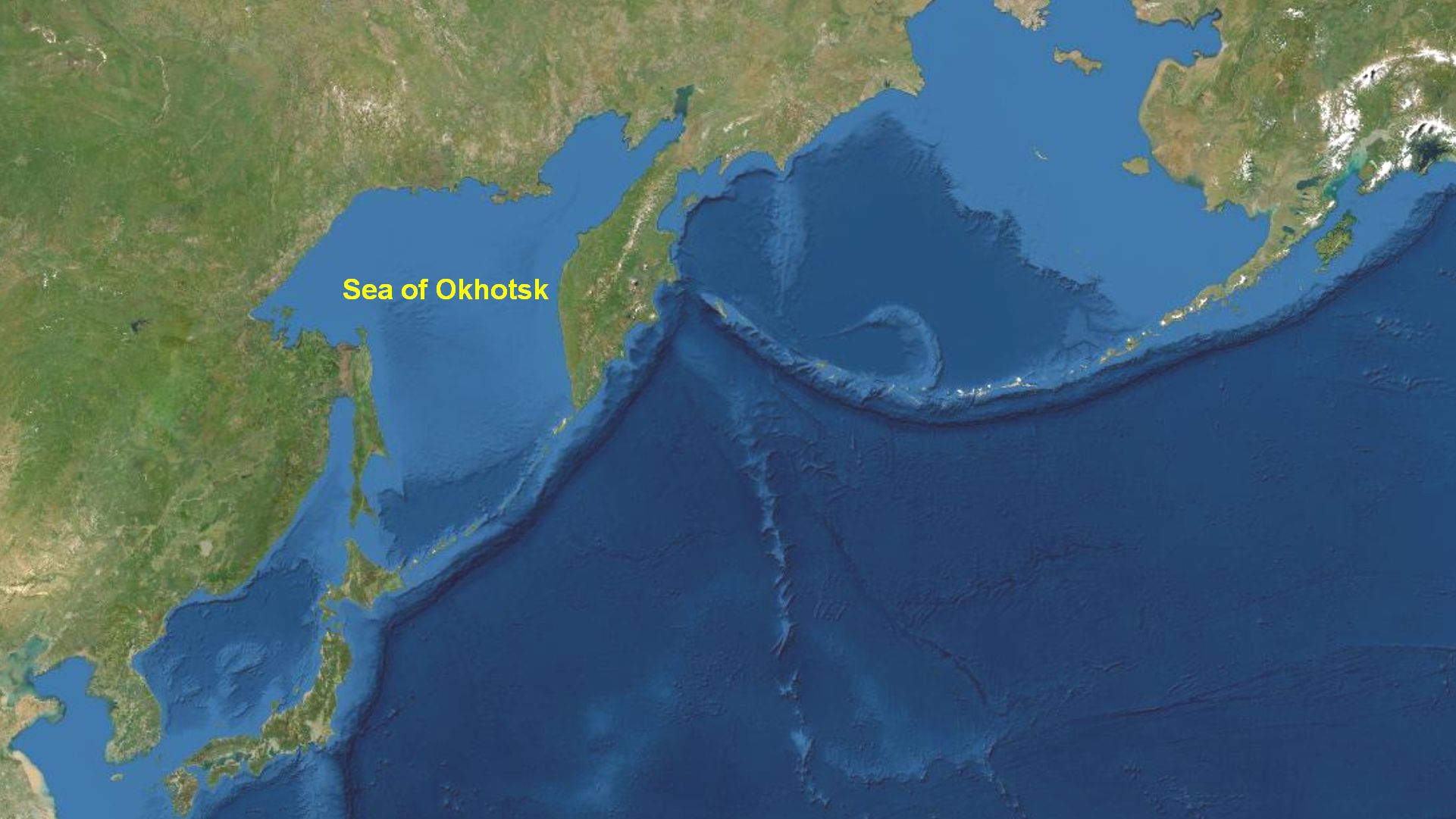
Presentation will be via Zoom.
For proper viewing of the program the desktop application version must be at 5.2.3 or greater!
Version 5.5.2 is the current version available as of 2/20/2021.
Meeting ID: 899 7437 4519
Passcode: 922779
Or Join Zoom Meeting with your web browser at: https://us02web.zoom.us/j/89974374519?pwd=UHZla0YrNjluTCtremo3eXlZK2dhQT09
Presented by David Pereksta

Crested Auklet by David Pereksta
The nearly landlocked Sea of Okhotsk in the Russian Far East, which dominates the Northwest Pacific, is little known outside of Russia and seldom visited by westerners. Its upper regions remain frozen much of the year and winter storms make it an inhospitable place, but the “Sea of Hunters” as it is translated provides a clue to the abundance of wildlife found there. Despite historical exploitation of wildlife, marine mammals and seabirds still thrive there in numbers that boggle the mind. Seabird numbers can only be described as spectacular with numbers rarely seen elsewhere in the world, including one small island with an estimated 7 million birds! However, this little-known sea also has a dark history that up until recently has been suppressed and not spoken about, and perhaps no other sea in the world has witnessed as much human suffering and misery.
Presenter David Pereksta had a rare opportunity to explore this incredible region in June of 2016 and will share some of his experiences with the wildlife, culture, and history in a talk lavishly illustrated with the highlights of the photos he took while there.
 David Pereksta is an Avian Biologist with the Bureau of Ocean Energy Management, where he studies and analyzes the effects of offshore oil and gas, and renewable energy development on birds off the Pacific coast and Hawaii. Prior to his position at BOEM, Dave spent 16 years working on endangered species issues with the U.S. Fish and Wildlife Service in Ventura. Throughout his career with various Federal and State agencies, he has studied several imperiled bird species including Snowy Plovers, Piping Plovers, Least Terns, Ospreys, Northern Goshawks, Brown Pelicans, Spotted Owls, and Ivory-billed Woodpeckers.
David Pereksta is an Avian Biologist with the Bureau of Ocean Energy Management, where he studies and analyzes the effects of offshore oil and gas, and renewable energy development on birds off the Pacific coast and Hawaii. Prior to his position at BOEM, Dave spent 16 years working on endangered species issues with the U.S. Fish and Wildlife Service in Ventura. Throughout his career with various Federal and State agencies, he has studied several imperiled bird species including Snowy Plovers, Piping Plovers, Least Terns, Ospreys, Northern Goshawks, Brown Pelicans, Spotted Owls, and Ivory-billed Woodpeckers.
An avid birder for 45 years, Dave has traveled throughout North America, South America, the American tropics, the South Pacific, and East Asia including leading trips to Belize, Costa Rica, and Peru. He has seen 2,100 species of birds in his travels; photographing in excess of 1,500 species along the way.
Our monthly programs continue to be presented virtually. As each date approaches, look for an email—or on our website or social media—for a connection link. We hope to see you there! Are you new to Zoom? Please don’t let that deter you from joining us. Programs chair Teresa Fanucchi can help you get started. Call or email her: Hidden; email hidden; JavaScript is required.
Sponsored By Santa Barbara Audubon Society
Five Years on, What Have We Learned?
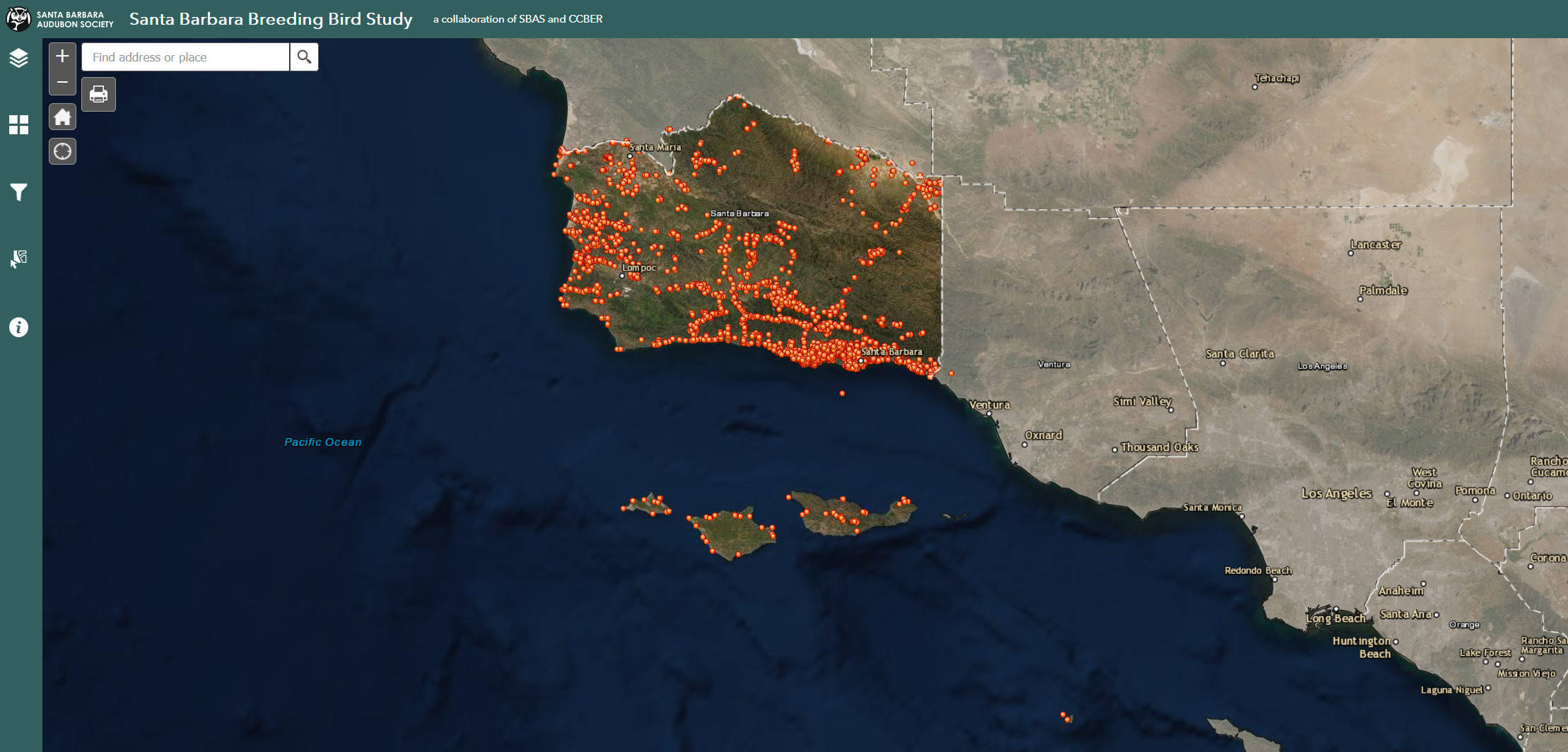
Presentation will be via Zoom.
For proper viewing of the program the desktop application version must be at 5.2.3 or greater!
Version 5.5.2 is the current version available as of 2/20/2021.
Meeting ID: 864 5811 0697
Passcode: 798433
Or Join Zoom Meeting with your web browser at: https://us02web.zoom.us/j/86458110697?pwd=NUxQSzI0L1RQTE9BNUVzeWltRGt6QT09
Presented by Adrian O’Loghlen and Mark Holmgren
 With nearly 9,500 records, after 5 years of data gathering, and contributions from more than 300 people, we should know some new things about Santa Barbara County’s breeding birds! Let’s find out as Adrian and Mark present some results of the Breeding Bird Study (BBS). With the help of their colleagues at UCSB’s Cheadle Center for Biodiversity and Ecological Restoration (CCBER) and the Goleta Coast Audubon Society they’ll show not only results, but the scientific, conservation, regulatory, and education uses for the information in the BBS using their new Web Map Application.
With nearly 9,500 records, after 5 years of data gathering, and contributions from more than 300 people, we should know some new things about Santa Barbara County’s breeding birds! Let’s find out as Adrian and Mark present some results of the Breeding Bird Study (BBS). With the help of their colleagues at UCSB’s Cheadle Center for Biodiversity and Ecological Restoration (CCBER) and the Goleta Coast Audubon Society they’ll show not only results, but the scientific, conservation, regulatory, and education uses for the information in the BBS using their new Web Map Application.

Adrian O’Loghlen got his PhD in Behavioral Ecology from UCSB based on research of song dialects in Brown-headed Cowbirds. His post-doctoral research from the University of Washington, Seattle, was on the function of song variation in Song Sparrows. Adrian taught numerous classes at UCSB and UW on the evolution of animal behavior and social behavior in particular. Studying and watching birds are his primary past times.
Mark Holmgren was curator of the Vertebrate Collections at UCSB’s CCBER from 1984 to 2010. Mark birds, travels, and for Santa Barbara Audubon coordinates Kite Watch. Together Mark and Adrian manage the SB County Breeding Bird Study, and both serve on SBAS’s Science and Conservation Committee.
Our monthly programs continue to be presented virtually. As each date approaches, look for an email—or on our website or social media—for a connection link. We hope to see you there! Are you new to Zoom? Please don’t let that deter you from joining us. Programs chair Teresa Fanucchi can help you get started. Call or email her: Hidden; email hidden; JavaScript is required.
Sponsored By Santa Barbara Audubon Society
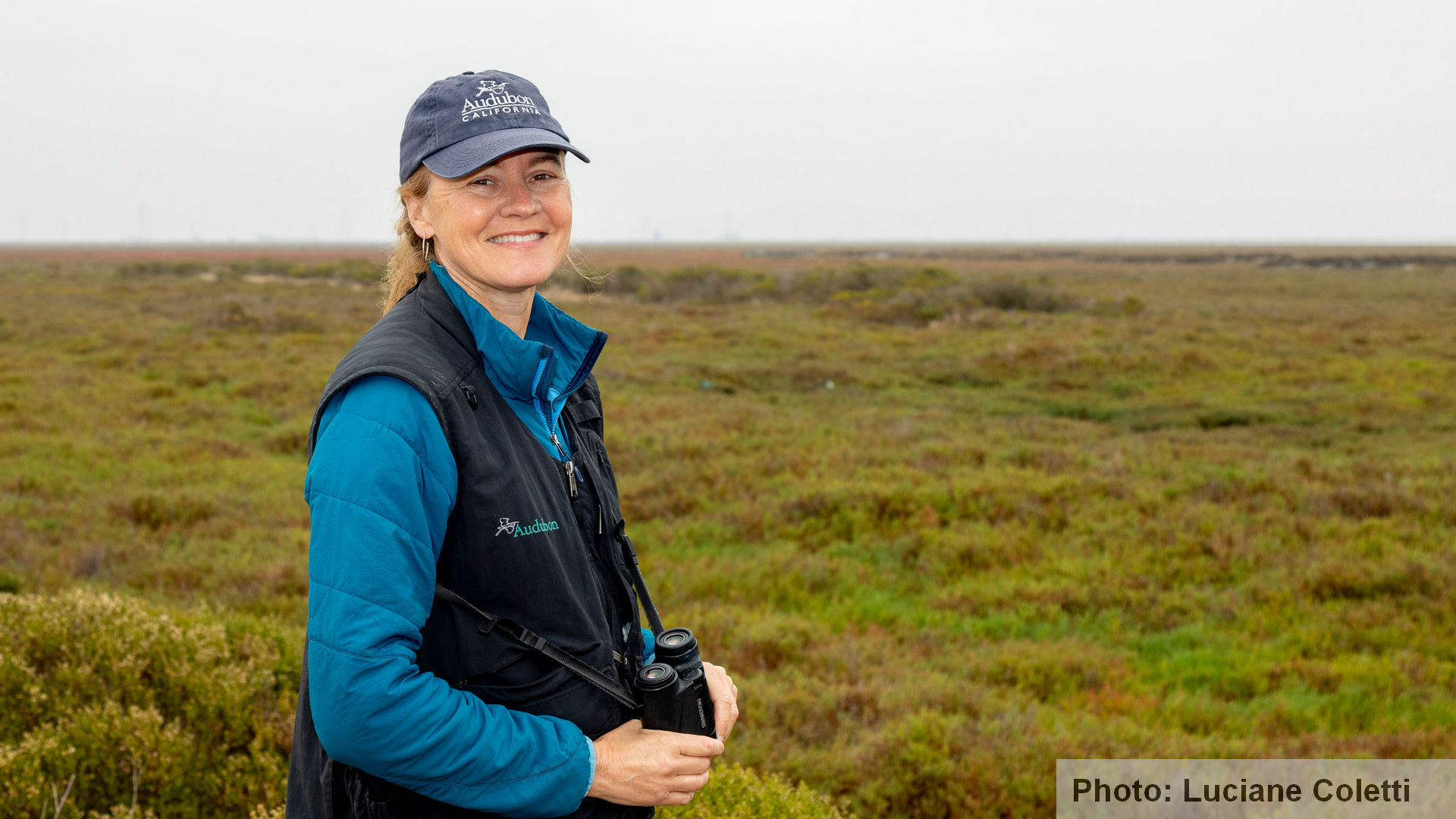
Presentation will be via Zoom.
For proper viewing of the program the desktop application version must be at 5.2.3 or greater!
Version 5.4.7 is the current version available.
Meeting ID: 865 5521 6104
Passcode: 825879
Or Join Zoom Meeting with your web browser at: https://us02web.zoom.us/j/86555216104?pwd=RVYwSkdJcHp5aFZBTHNReCtlZFkzUT09
Presented by Andrea Jones
Something special happens when a river meets an ocean. Freshwater rivers and streams flow from inland to mix with salty ocean water, creating a unique habitat called an estuary. Estuaries, and the wetlands and bays that surround them, are some of the most productive areas in the world for birds, other wildlife, and humans. Presenter Andrea Jones will focus on California’s coasts and estuaries, which are part of the Pacific Flyway–the migratory bird highway stretching from the Arctic to Patagonia, supporting nearly a billion birds.
Andrea Jones is Director of Bird Conservation for Audubon California. For the past 13 years, she has worked with staff and the network of Audubon chapters across the state to implement conservation projects at high priority Important Bird Areas. In particular, she has focused on leading Audubon’s conservation efforts along the coast and in estuaries, focusing on restoration, advocacy and engagement. Her work has also included providing science expertise and negotiating conservation agreements at saline lakes, including Owens Lake and Salton Sea. She oversees efforts in priority bird species and serves as the spokeswoman for bird conservation across California. Prior to California, Andrea worked at Massachusetts Audubon where she served as the Director of the Coastal Waterbird and Grassland Bird Programs.
Our monthly programs have gone virtual! While the Covid-19 pandemic continues we will be presenting our programs via Zoom. As each date approaches, look for an email—or on our website or social media—for a connection link. Are you new to Zoom? Please don’t let that deter you from joining us. Programs chair Teresa Fanucchi can help you get started. Call or email her: Hidden; email hidden; JavaScript is required.
Sponsored By Santa Barbara Audubon Society
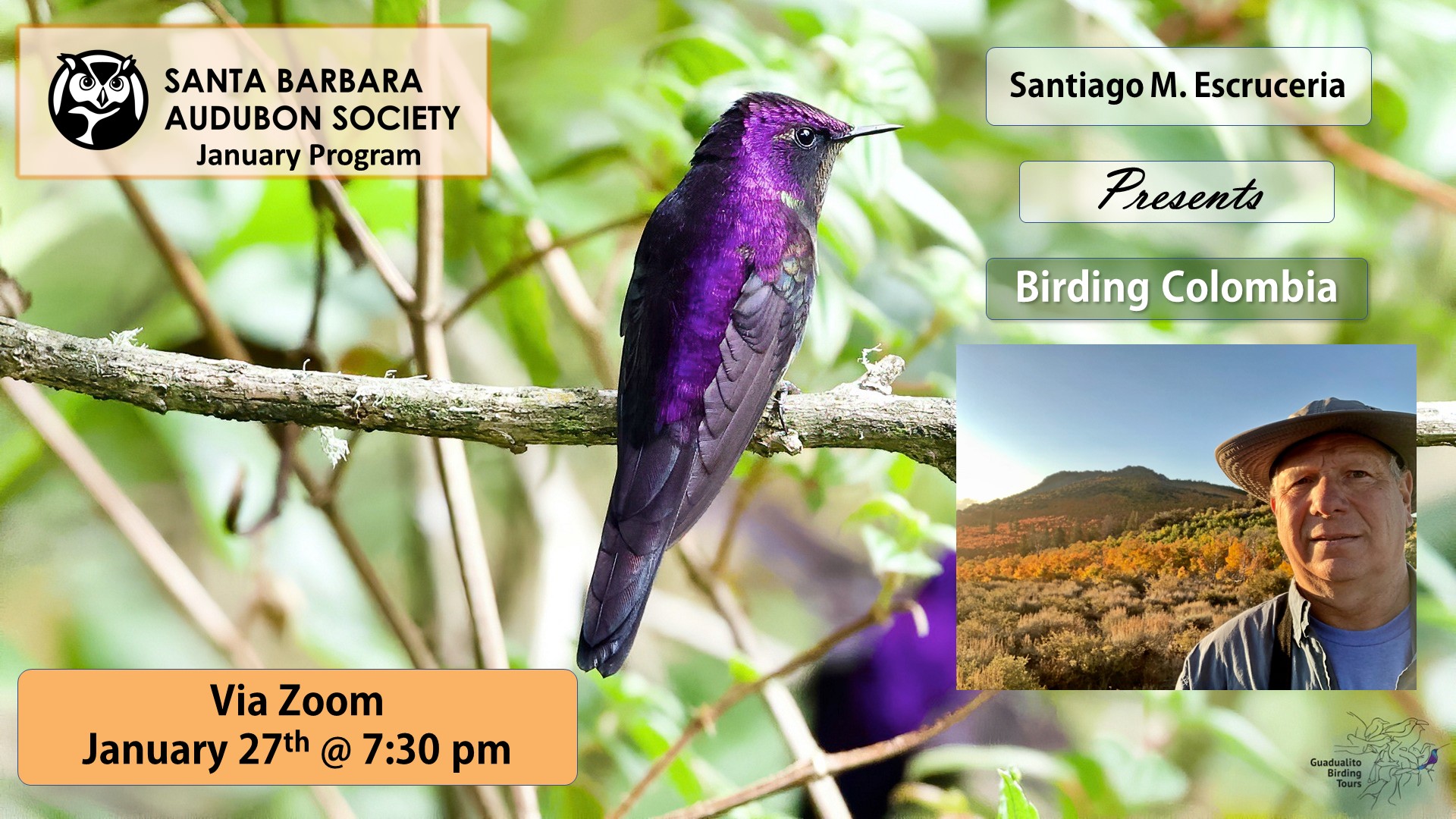
Presentation will be via Zoom.
For proper viewing of the program the desktop application version must be at 5.2.3 or greater!
Version 5.4.7 is the current version available.
Meeting ID: 836 8840 9647
Passcode: 483887
Or Join Zoom Meeting with your web browser at: https://us02web.zoom.us/j/83688409647?pwd=TWpkTmprYzJyZ2J5RHpyM0JmcjdlQT09
Presented by Santiago M. Escruceria
 Join us for a colorful international birding experience right from your home! Colombia has 20% of the bird species in the world—some 1,957 known species. Environmental educator, birding guide, photographer and fellow Auduboner Santiago Escruceria will share his beautiful photos and discuss geographical, ecological, and political insights on birding in Colombia.
Join us for a colorful international birding experience right from your home! Colombia has 20% of the bird species in the world—some 1,957 known species. Environmental educator, birding guide, photographer and fellow Auduboner Santiago Escruceria will share his beautiful photos and discuss geographical, ecological, and political insights on birding in Colombia.
Santiago M. Escruceria is a Colombian-born American citizen residing in California for the past 41 years. He has taught environmental education in Spanish and English for the past 30 years, 21 of those with the Mono Lake Committee. At Mono Lake he manages the Committee’s Outdoor Education Center program for Los Angeles youth and adults, and for student groups from all over California. Santiago is an avid birder and bird photographer, leading birding adventures in Colombia during the winter (guadualitobirdingtours.com) and walks for school groups in the Mono Basin during the rest of the year. He is currently President of the Eastern Sierra Audubon Chapter.
Our monthly programs are going virtual! As in past years, our programs resume in the fall, but this time we will be gathering via Zoom. As each date approaches, look for an email—or on our website or social media—for a connection link. Are you new to Zoom? Please don’t let that deter you from joining us. Programs chair Teresa Fanucchi can help you get started. Call or email her: Hidden; email hidden; JavaScript is required.
Sponsored By Santa Barbara Audubon Society

Presentation will be via Zoom.
For proper viewing of the program the desktop application version must be at 5.2.3 or greater!
Version 5.4.2 is the current version available.
Meeting ID: 831 4412 2457
Passcode: 124690
Or Join Zoom Meeting with your web browser at:
https://us02web.zoom.us/j/83144122457?pwd=ak4wTTNIZ3JEYTVYYVJZdWtWZXdwQT09
Presented by Scot Pipkin
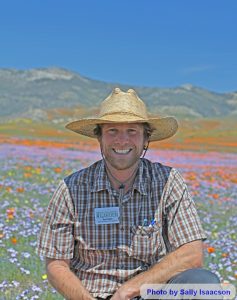 Plants are the foundation of most ecosystems on earth. If we want to create rich, diverse, and resilient habitats in our yards and communities, we have to start with the appropriate plants. In this program, we will explore the importance of native plants to our local birds as sources of food, roosting, nesting, and more. We’ll take a closer look at your habitat goals and identify specific California native plants that can help you maintain bird-friendly habitat year-round.
Plants are the foundation of most ecosystems on earth. If we want to create rich, diverse, and resilient habitats in our yards and communities, we have to start with the appropriate plants. In this program, we will explore the importance of native plants to our local birds as sources of food, roosting, nesting, and more. We’ll take a closer look at your habitat goals and identify specific California native plants that can help you maintain bird-friendly habitat year-round.
Scot Pipkin is Director of Education and Engagement at the Santa Barbara Botanic Garden. Born and raised in San Diego, he received a degree in Geography with an emphasis in biogeography from UCLA. He has spent his career acquiring and sharing an understanding of the natural world that emphasizes the interconnections that surround us. These efforts have allowed him to work in some of the most beautiful and ecologically rich places in the Southwest, including Yosemite, the redwoods of the San Mateo Coast, Tejon Ranch, Saguaro National Park in Arizona, and the Lincoln National Forest in New Mexico. Along the way, he received a degree in Landscape Architecture from the University of Arizona and spent countless hours identifying plants/birds/butterflies and anything else that has come his way.
Our monthly programs are going virtual! As in past years, our programs resume in the fall, but this time we will be gathering via Zoom. As each date approaches, look for an email—or on our website or social media—for a connection link. Are you new to Zoom? Please don’t let that deter you from joining us. Programs chair Teresa Fanucchi can help you get started.
Sponsored By Santa Barbara Audubon Society

Location:
Presentation will be via Zoom.
For proper viewing of the program the desktop application version must be at 5.2.3 or greater!
Version 5.4 is the current version available.
Meeting ID: 822 9481 3324
Passcode: 462394
Or Join Zoom Meeting with your web browser at:
https://us02web.zoom.us/j/82294813324?pwd=bVB0SCtSVjZRb21rK2dReDQxV29Fdz09
Presented by Kian and Joel Schulman with Cathy Schoonmaker
 Rodenticides are abundant throughout the ecosystem from residential and commercial usage, poisoning wildlife predator species including owls, hawks, foxes, bobcats, coyotes, and mountain lions at 80% to 90% exposure rates. Presenters Kian and Joel Schulman will discuss how this is unnecessary and describe alternative methods. Recent efforts to protect wildlife at the city, county, and state level will be presented.
Rodenticides are abundant throughout the ecosystem from residential and commercial usage, poisoning wildlife predator species including owls, hawks, foxes, bobcats, coyotes, and mountain lions at 80% to 90% exposure rates. Presenters Kian and Joel Schulman will discuss how this is unnecessary and describe alternative methods. Recent efforts to protect wildlife at the city, county, and state level will be presented.
Kian and Joel Schulman founded Poison Free Malibu in 2013 to work to stop the poisoning of wildlife. The effort started in Malibu, and spread to nearby cities and counties, and then statewide as a part of a coalition to pass state legislation restricting rat poisons.
 Cathy Schoonmaker is an Outdoor Recreation Planner for Santa Monica Mountains National Recreation Area. With a degree in Environmental Biology, she has over 10 years of experience working with our native Southern California wildlife, specifically coyotes, bobcats, and mountain lions. Ms. Schoonmaker currently works on the Nature Neighbor Program, sponsored by the National Park Service, providing outreach and education to local communities about our wildlife’s success and struggles living adjacent to urban areas and how residents can coexist with these animals.
Cathy Schoonmaker is an Outdoor Recreation Planner for Santa Monica Mountains National Recreation Area. With a degree in Environmental Biology, she has over 10 years of experience working with our native Southern California wildlife, specifically coyotes, bobcats, and mountain lions. Ms. Schoonmaker currently works on the Nature Neighbor Program, sponsored by the National Park Service, providing outreach and education to local communities about our wildlife’s success and struggles living adjacent to urban areas and how residents can coexist with these animals.
Our monthly programs are going virtual! As in past years, our programs resume in the fall, but this time we will be gathering via Zoom. As each date approaches, look for an email—or on our website or social media—for a connection link. Are you new to Zoom? Please don’t let that deter you from joining us. Programs chair Teresa Fanucchi can help you get started.
Sponsored By Santa Barbara Audubon Society
Photo by: Kian and Joel Schulman
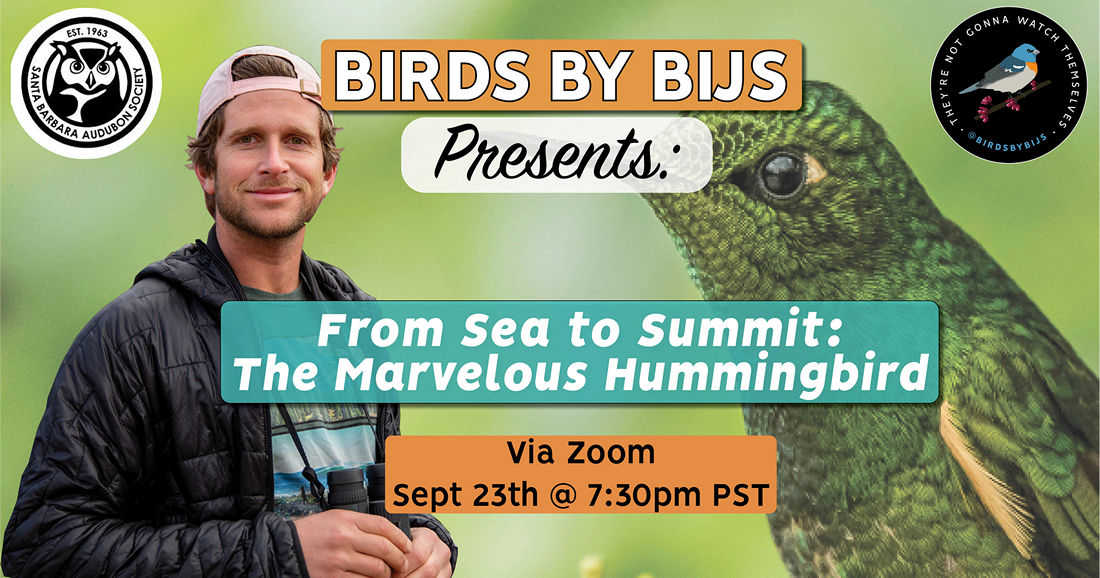
Presentation will be via Zoom.
It is strongly recommended when using the desktop application to up-grade the application to 5.2.3 or greater!
Meeting ID: 839 6089 0580
Passcode: 661045
Or Join Zoom Meeting with your web browser at:
https://us02web.zoom.us/j/83960890580?pwd=aVNWbEJlTjE0Uk1lenNxbVZyQzNsQT09
Presented by Benny Jacobs-Schwartz
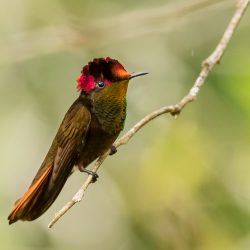
Photo by Benny Jacobs-Schwartz
From Alaska to the high Andes of South America, join Benny Jacobs-Schwarz as he leads us on an exploration of the magic of hummingbirds! With over 360 species recognized globally, he will discuss their remarkable biology, expansive range, ecological significance, and the best way to attract them to your yard. Benny’s presentation is enhanced by stunning photos and educational videos. Plus, a local hummingbird ID section is included.
 Benny Isaac Jacobs-Schwartz (aka BIJS) works seasonally as a naturalist, expedition trip leader, and international bird guide. Most recently his work has been in coastal Alaska, Trinidad and Tobago, and the Ecuadorian cloud forest. While back at home base in Los Angeles, he leads public and private birding adventures to urban hotspots, where he inspires others to conserve the open spaces around them and look up more often from their phones! He is also a passionate photographer, specializing in birds. He is owner and operator of BIRDS by BIJS (pronounced Bee-jus).
Benny Isaac Jacobs-Schwartz (aka BIJS) works seasonally as a naturalist, expedition trip leader, and international bird guide. Most recently his work has been in coastal Alaska, Trinidad and Tobago, and the Ecuadorian cloud forest. While back at home base in Los Angeles, he leads public and private birding adventures to urban hotspots, where he inspires others to conserve the open spaces around them and look up more often from their phones! He is also a passionate photographer, specializing in birds. He is owner and operator of BIRDS by BIJS (pronounced Bee-jus).
Our monthly programs are going virtual! As in past years, our programs resume in the fall, but this time we will be gathering via Zoom. As each date approaches, look for an email—or on our website or social media—for a connection link. Are you new to Zoom? Please don’t let that deter you from joining us. Programs chair Teresa Fanucchi can help you get started.
Sponsored By Santa Barbara Audubon Society

Location:
Farrand Auditorium, Santa Barbara Museum of Natural History
2559 Puesta del Sol, Santa Barbara, CA 93105
Map – SBMNH
Presented by Frank DeMartino
 Migration is one of the most amazing feats that birds perform. Humanity has been fascinated by the pattern of appearing and disappearing birds for millennia. Understanding migration is a key step to realizing the challenges and threats that birds deal with on a regular basis. We will look at some of the myths that have surrounded migration through the ages and some that persist even today. We will highlight some of the many obstacles migrating birds face and the incredible ways that they have evolved to deal with them. Finally, we will look at current conservation issues that pertain to migration, and at current conservation efforts like Cornell’s Seven Simple Actions to Bring Birds Back.
Migration is one of the most amazing feats that birds perform. Humanity has been fascinated by the pattern of appearing and disappearing birds for millennia. Understanding migration is a key step to realizing the challenges and threats that birds deal with on a regular basis. We will look at some of the myths that have surrounded migration through the ages and some that persist even today. We will highlight some of the many obstacles migrating birds face and the incredible ways that they have evolved to deal with them. Finally, we will look at current conservation issues that pertain to migration, and at current conservation efforts like Cornell’s Seven Simple Actions to Bring Birds Back.
Frank DeMartino is an avid birdwatcher whose passion for birds has led him to serve on the board for both Ventura Audubon Society and Conejo Valley Audubon Society. Currently he serves as the President for CVAS and he opened a Wild Birds Unlimited store in Ventura in 2017.
Doors open at 7:00 pm – join us for refreshments
Sponsored By Santa Barbara Audubon Society
And
Wild Birds Unlimited of Ventura
For their continued support, Santa Barbara Audubon thanks
Santa Barbara Museum of Natural History
Photo credits: Warbler by Frank De Martino – Frank De Martino by Cia DeMartino – Moon by David Levasheff

Location:
Farrand Hall, Santa Barbara Museum of Natural History
2559 Puesta del Sol, Santa Barbara, CA 93105
Map – SBMNH
Presented by Satie Airame and Jeff Chemnick
Peru’s Manu Road, known popularly as “the birdiest road in the world,” spans an enormous elevational gradient from 500 to 11,500 feet, including high Andes, puna grassland, cloud forest, montane forest, and lowland Amazon Forest. These diverse habitats are protected in Manu National Park, where more than 1,000 bird species live in and around the park.
Ecologist and nature photographer Satie Airame, together with cycad expert and eco-tour guide Jeff Chemnick, birded the Manu Road for the first time in June 1999. Twenty years later, in May 2019, they returned with 3 birding guides from 3 continents: Alfred Twinomujuni from Uganda, Phub Dorji from Bhutan, and Raphael Santos from Brazil. This multinational birding team never met before but bonded quickly over their shared passion and expertise. Alfred from Uganda applied his unbelievable ability to whistle calls to attract birds and his x-ray vision to find birds in dense forest.
Raphael, with 16 years of experience leading bird tours throughout Brazil and adjacent South American countries, knew almost all bird calls by ear and brought attention to important birds through their calls. Dorji established himself as a master photographer who got great photos of any bird in any location and any light. He was just honored as Bhutan’s Wildlife Photographer of the Year!
In 3 weeks, the team saw and heard 538 bird species and photographed many birds in their natural habitats.Highlights included Andean Cock-of-the-Rock on a lek, critically endangered Royal Cinclodes in a Polylepis remnant at Abra Malaga, Red-and-White Antpitta coyly calling from dense cloud forest vegetation, Hairy-crested Antbird attending an army ant swarm, and the impressive and near-threatened Crested Eagle that flew into our canopy tower tree to check out Alfred whistling. Enjoy an inspiring photographic journey about birds of Manu with informative and colorful narration by Airame and Chemnick. Photos contributed by Satie Airame, Raphael E. F. Santos and Phub Dorji.
Satie Airame is Assistant Dean for Academic Programs at UCSB’s Bren School of Environmental Science & Management.As scientific advisor from 2000-2010 to NOAA’s Channel Islands National Marine Sanctuary and the Marine Life Protection Initiative, Satie contributed to the design of marine protected areas around the Channel Islands and throughout California’s coastal waters. Satie received a PhD in ecology from the University of Chicago in 1999.
Jeff Chemnick is a research associate at Ganna Walska Lotusland, and an authority on Mexican cycads. He owns and operates Aloes in Wonderland, a specialty nursery in Santa Barbara, where he has lived since 1981. Jeff leads botanical and ornithological ecotours throughout Mexico. His world bird life list is in excess of 5,100 species.
Doors open at 7:00 pm – join us for refreshments
Sponsored By Santa Barbara Audubon Society
Special thank you to Santa Barbara Museum of Natural History for their support
All photos by Satie Airame

Location:
Farrand Hall, Santa Barbara Museum of Natural History
2559 Puesta del Sol, Santa Barbara, CA 93105
Map – SBMNH
Presented by Naira De Gracia and Michael Love
Join biologist Naira De Gracia and filmmaker Michael Love for a screening of “Living with Penguins,” a 30-minute film which chronicles Naira’s two six-month seasons in Antarctica collecting data on breeding Gentoos and Chinstraps. It offers a rare and often humorous glimpse into the everyday life of a field biologist living in a remote outpost with three other researchers. Naira’s narration is a reflective journal that both educates us about these flightless birds and examines the spiritual rewards of working in such a starkly beautiful place. After the screening, both presenters will speak briefly followed by Q & A.

 Naira De Gracia is a field biologist who works on remote sites in wildlife monitoring and habitat restoration. Her family is from Santa Barbara—Michael is her uncle—and she enjoys spending time back in town in between field seasons. She’ll be headed to New Zealand in January to complete her master’s in conservation biology. Michael Love is a prizewinning filmmaker specializing in natural history projects locally and nationally. He has had seven films selected for the Santa Barbara International Film Festival and is now at work on “Endangered in California,” a film and series about endangered species in California that have been brought back from the brink of extinction.
Naira De Gracia is a field biologist who works on remote sites in wildlife monitoring and habitat restoration. Her family is from Santa Barbara—Michael is her uncle—and she enjoys spending time back in town in between field seasons. She’ll be headed to New Zealand in January to complete her master’s in conservation biology. Michael Love is a prizewinning filmmaker specializing in natural history projects locally and nationally. He has had seven films selected for the Santa Barbara International Film Festival and is now at work on “Endangered in California,” a film and series about endangered species in California that have been brought back from the brink of extinction.
Doors open at 7:00 pm – join us for refreshments
Sponsored By Santa Barbara Audubon Society

Location:
Farrand Hall, Santa Barbara Museum of Natural History
2559 Puesta del Sol, Santa Barbara, CA 93105
Map – SBMNH
Presented by Glenn Kincaid
 The natural history of New Zealand has produced a distinctive collection of avifauna—over half of New Zealand’s native birds are found nowhere else on earth! New Zealand’s native birds face unique threats, and many species are at risk or endangered. New Zealand has been at the forefront of developing innovative approaches to counter these threats. This talk will touch on the evolution of New Zealand’s native birds, their present status, and some of the strategies that have been developed to save them from extinction.
The natural history of New Zealand has produced a distinctive collection of avifauna—over half of New Zealand’s native birds are found nowhere else on earth! New Zealand’s native birds face unique threats, and many species are at risk or endangered. New Zealand has been at the forefront of developing innovative approaches to counter these threats. This talk will touch on the evolution of New Zealand’s native birds, their present status, and some of the strategies that have been developed to save them from extinction.
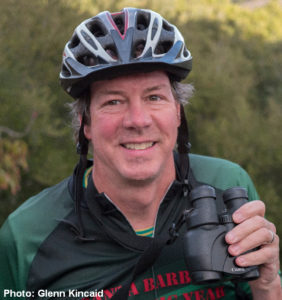 When he was young Glenn Kincaid was fascinated by the birds that came to the feeder. Many years passed before he realized you could actually go looking for the birds. Since that realization, Glenn has gone looking for birds on all continents except Antarctica. In 2015 Glenn undertook a Green Big Year in Santa Barbara county, saw 285 species of birds, and biked over 4400 miles. In addition to looking for birds, Glenn is interested in matters of bird conservation and has been involved for several years in monitoring Santa Barbara’s only known breeding population of Purple Martins. Glenn divides his time between Santa Barbara, Castle Valley Utah, and Blenheim New Zealand.
When he was young Glenn Kincaid was fascinated by the birds that came to the feeder. Many years passed before he realized you could actually go looking for the birds. Since that realization, Glenn has gone looking for birds on all continents except Antarctica. In 2015 Glenn undertook a Green Big Year in Santa Barbara county, saw 285 species of birds, and biked over 4400 miles. In addition to looking for birds, Glenn is interested in matters of bird conservation and has been involved for several years in monitoring Santa Barbara’s only known breeding population of Purple Martins. Glenn divides his time between Santa Barbara, Castle Valley Utah, and Blenheim New Zealand.
Doors open at 7:00 pm – join us for refreshments
Sponsored By Santa Barbara Audubon Society

Location:
Farrand Hall, Santa Barbara Museum of Natural History
2559 Puesta del Sol, Santa Barbara, CA 93105
Map – SBMNH
Presented by Sarah Otterstrom
 Many of central California’s migratory birds winter in tropical areas where intensive agriculture and coastal development pose a threat to their survival. Paso Pacifico is a Ventura-based non-profit that works to protect these ecosystems in western Central America. Executive Director Sarah Otterstrom will share stories of the challenges and rewards of practicing conservation in the region. She’ll talk about Paso Pacifico’s migratory bird program (including its MoSI bird-banding stations and Willow Flycatcher monitoring), and the organization’s efforts to transform interactions between local people and birds through a slingshot-for-binoculars exchange and junior ranger programs.
Many of central California’s migratory birds winter in tropical areas where intensive agriculture and coastal development pose a threat to their survival. Paso Pacifico is a Ventura-based non-profit that works to protect these ecosystems in western Central America. Executive Director Sarah Otterstrom will share stories of the challenges and rewards of practicing conservation in the region. She’ll talk about Paso Pacifico’s migratory bird program (including its MoSI bird-banding stations and Willow Flycatcher monitoring), and the organization’s efforts to transform interactions between local people and birds through a slingshot-for-binoculars exchange and junior ranger programs.
Dr. Sarah Otterstrom founded the non-profit Paso Pacifico in 2005 in response to the urgent need to protect Nicaragua’s coastal dry tropical forests, where she did her graduate research. Today the organization works in both El Salvador and Nicaragua, two countries where conservation investments are otherwise very limited. Sarah holds a Ph.D. in ecology from UC Davis and an undergraduate biology degree from the Universidad Latina de Costa Rica. She first fell in love with birds when she worked as a naturalist tour guide in Costa Rica in the early 1990s. Sarah resides in Ojai, California where she enjoys backyard birding with her children.
Pre-Program Special event:
Meet Katherine Emery our new Executive Director
6:00-7:15pm
In the S.B. Museum of Natural History Courtyard
Light refreshments will be served
Doors open at 7:00 pm – join us for refreshments
Sponsored By Santa Barbara Audubon Society
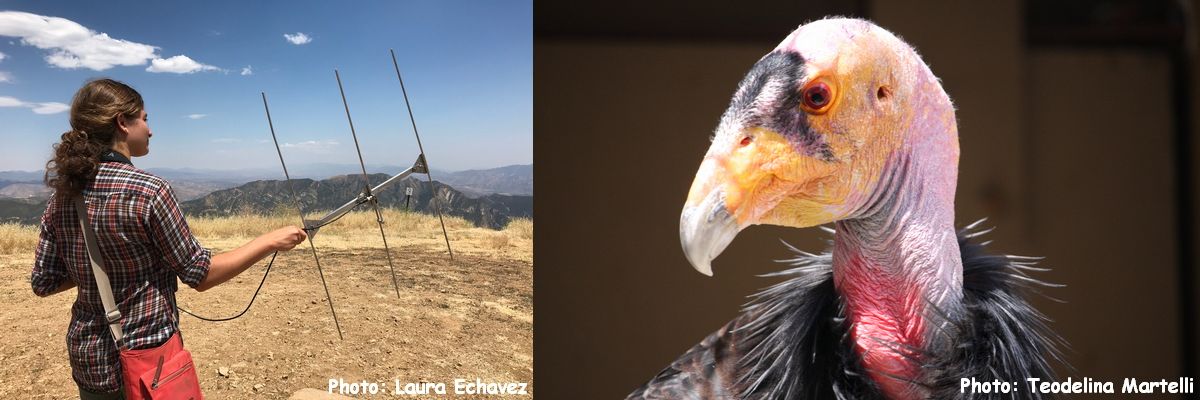
Location:
Farrand Hall, Santa Barbara Museum of Natural History
2559 Puesta del Sol, Santa Barbara, CA 93105
Map – SBMNH
Presented by Teodelina Martelli
Join us for an evening with impressive high school senior Teodelina Martelli, when she will present on the conservation and management methods that rescued the California Condor from extinction, including the riveting history about how these methods were developed just in time. Teodelina will report on her experiences in the field and update us with news on the current state of the condor.
 Teodelina Martelli was one of the 2018 American Birding Association’s Young Birder of the Year. She was a scholarship recipient for the 2014 Western Field Ornithologists (WFO) conference, and in 2018 co-led, with Brad Schram, the WFO Conference’s field trip to Bitter Creek National Wildlife Refuge. She is also part of the 2018-19 class of the L.A. Phil’s Nancy and Barry Sanders Composer Fellowship Program.
Teodelina Martelli was one of the 2018 American Birding Association’s Young Birder of the Year. She was a scholarship recipient for the 2014 Western Field Ornithologists (WFO) conference, and in 2018 co-led, with Brad Schram, the WFO Conference’s field trip to Bitter Creek National Wildlife Refuge. She is also part of the 2018-19 class of the L.A. Phil’s Nancy and Barry Sanders Composer Fellowship Program.
Teodelina Martelli spent the past two summers as a field intern and volunteer researcher with the California Condor Recovery Program. She is an aspiring ornithologist, composer, and artist. She has been fascinated with birds since the age of 3 and intends to pursue a lifelong career in ornithology, particularly focusing on the behavior, evolution, and courtship of birds.
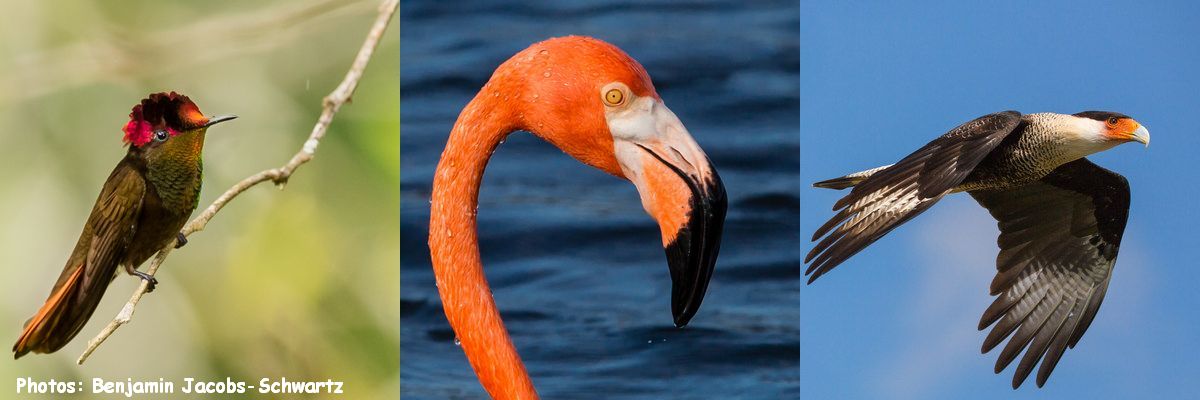
Location:
Farrand Hall, Santa Barbara Museum of Natural History
2559 Puesta del Sol, Santa Barbara, CA 93105
Map – SBMNH
Presented by Benjamin Jacobs-Schwartz
Delving into topics of migration, tropical speciation, and bio-diversity, Benny Jacobs-Schwartz will share his dazzling photos, videos, and animated story-telling to bring a slice of the tropics to California. This media-rich journey will highlight some of the fascinating and unique birds that inhabit the new-world tropics. Sure to both educate and entertain, this presentation will leave you with a deeper understanding of tropical ecology and knowledge about where some of our backyard birds spend their winters.
 Benny Isaac Jacobs-Schwartz, works seasonally as a naturalist, expedition trip leader, and international bird guide. Most recently his work has been in coastal Alaska, Trinidad and Tobago, and the Ecuadorian cloud forest. While back at home base in Los Angeles, he leads public and private birding adventures to urban hotspots, where he inspires others to conserve the open spaces around them and look up more often from their phones! He is also a passionate photographer, specializing in birds. He is owner and operator of BIRDS by BIJS (pronounced Bee-jus).
Benny Isaac Jacobs-Schwartz, works seasonally as a naturalist, expedition trip leader, and international bird guide. Most recently his work has been in coastal Alaska, Trinidad and Tobago, and the Ecuadorian cloud forest. While back at home base in Los Angeles, he leads public and private birding adventures to urban hotspots, where he inspires others to conserve the open spaces around them and look up more often from their phones! He is also a passionate photographer, specializing in birds. He is owner and operator of BIRDS by BIJS (pronounced Bee-jus).
Doors open at 7:00 pm – join us for refreshments
Sponsored By Santa Barbara Audubon Society

Location:
Farrand Hall, Santa Barbara Museum of Natural History
2559 Puesta del Sol, Santa Barbara, CA 93105
Map – SBMNH
Presented by Karl Novak
 The Ventura County Watershed Protection District (WPD) maintains 56 dams and over 40 miles of levees which are highly susceptible to rodent burrow damage from ground squirrels. WPD developed and completed a Raptor Pilot Study to determine if owls and hawks can be attracted to a flood-control levee and provide better protection from ground squirrels than traditionally applied rodenticides. Join us to learn more about the exciting findings of the 17-month empirical study–that the damage at an area where raptor perches were installed was significantly less than damage at a similar reach where traditional anticoagulant bait stations were used.
The Ventura County Watershed Protection District (WPD) maintains 56 dams and over 40 miles of levees which are highly susceptible to rodent burrow damage from ground squirrels. WPD developed and completed a Raptor Pilot Study to determine if owls and hawks can be attracted to a flood-control levee and provide better protection from ground squirrels than traditionally applied rodenticides. Join us to learn more about the exciting findings of the 17-month empirical study–that the damage at an area where raptor perches were installed was significantly less than damage at a similar reach where traditional anticoagulant bait stations were used.
Dr. Karl Novak is a civil engineer and Deputy Director with the Ventura County Watershed Protection District. He served as Director of the Raptor Pilot Study.
Doors open at 7:00 pm – join us for refreshments
Sponsored By Santa Barbara Audubon Society
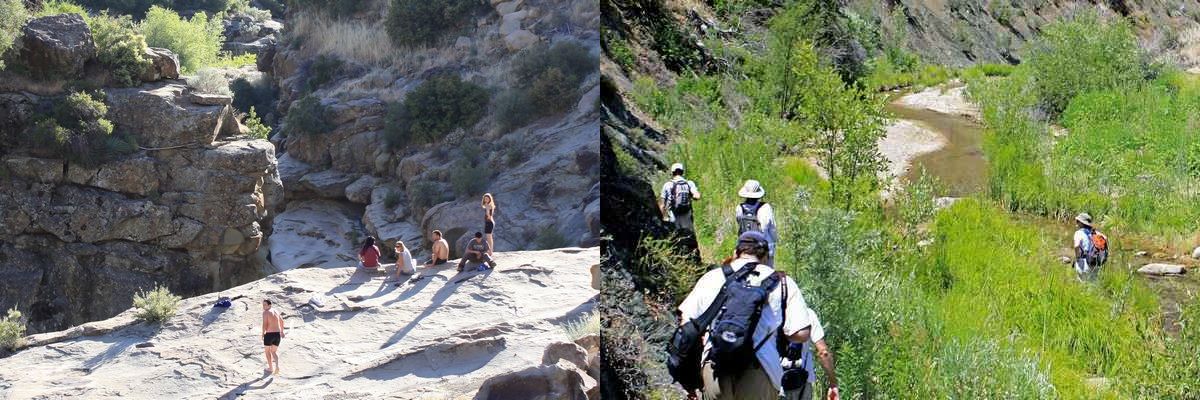
Location:
Farrand Hall, Santa Barbara Museum of Natural History
2559 Puesta del Sol, Santa Barbara, CA 93105
Presented by Steve Evans
 2018 marked the 50th anniversary of the passage of the National Wild and Scenic Rivers Act, the landmark law that has protected nearly 2,000 miles of rivers and streams in California. CalWild’s Steve Evans will present a historical overview of both the state and federal wild and scenic rivers systems and how they protect streams in the Santa Barbara region, like the Sisquoc River and Sespe Creek. He also will explore further opportunities for river protection at the federal level—with federal agencies and in Congress–even amidst current attempts to roll back protections of natural resources. Evans will discuss current threats to rivers, including the proposed Temperance Flat Dam on the San Joaquin River Gorge. The presentation will include many high-quality images of existing and proposed wild and scenic rivers throughout California.
2018 marked the 50th anniversary of the passage of the National Wild and Scenic Rivers Act, the landmark law that has protected nearly 2,000 miles of rivers and streams in California. CalWild’s Steve Evans will present a historical overview of both the state and federal wild and scenic rivers systems and how they protect streams in the Santa Barbara region, like the Sisquoc River and Sespe Creek. He also will explore further opportunities for river protection at the federal level—with federal agencies and in Congress–even amidst current attempts to roll back protections of natural resources. Evans will discuss current threats to rivers, including the proposed Temperance Flat Dam on the San Joaquin River Gorge. The presentation will include many high-quality images of existing and proposed wild and scenic rivers throughout California.
Wild Rivers Director for the California Wilderness Coalition (CalWild), and former Conservation Director of Friends of the River, Steve Evans has spent decades working to protect the state’s waterways.
Doors open at 7:00 pm – join us for refreshments
Sponsored By Santa Barbara Audubon Society
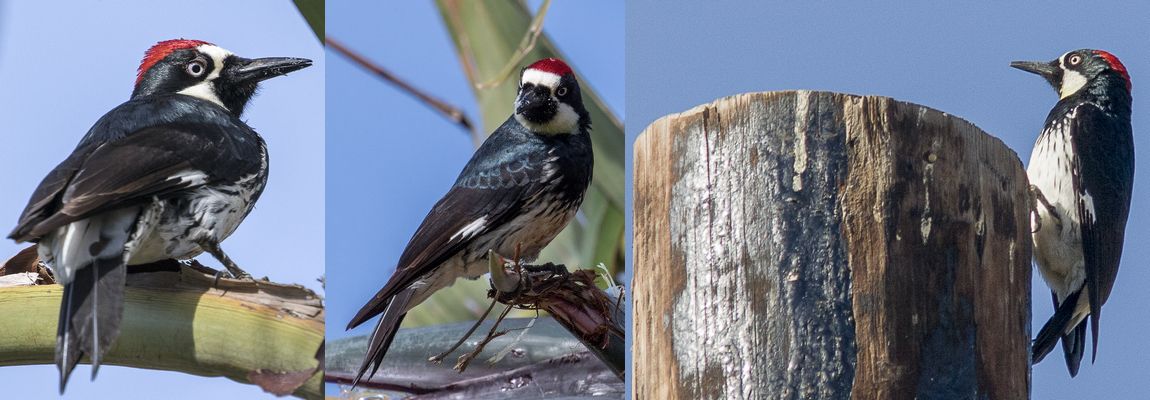
Location:
Farrand Hall, Santa Barbara Museum of Natural History
2559 Puesta del Sol, Santa Barbara, CA 93105
Presented by Thomas Kraft
Have you ever wondered why telephone poles in California are sometimes perforated with acorns? Or what that striking “waka-waka” sound is that you hear while walking down the street? Variously described as “nature’s clowns” or “clowns of the forest”, the loud and charismatic acorn woodpecker is a common sight throughout the Santa Barbara region. This talk will cover the natural history of this fascinating species, with an emphasis on their unique cooperation and social behavior, and the important role they play in the environment.
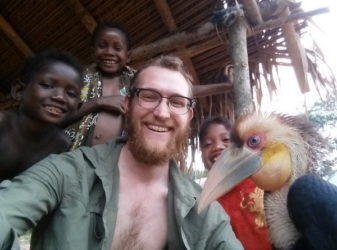 Thomas Kraft received his Ph.D. in Ecology and Evolutionary Biology from Dartmouth College in 2016, with a focus on the socioecology of tropical rainforest hunter-gatherers. After graduation, he moved to the University of California, Santa Barbara, for a postdoctoral scholar position in the Department of Anthropology. Tom’s current interests focus on the social behaviors and health of subsistence populations in the tropics. In his past life, however, Tom worked under Dr. Walt Koenig at Hastings Natural History Reservation to study acorn woodpeckers and their interactions with oak trees. During this time, he spent hundreds of hours watching, banding, and contemplating the fascinating lives of acorn woodpeckers.
Thomas Kraft received his Ph.D. in Ecology and Evolutionary Biology from Dartmouth College in 2016, with a focus on the socioecology of tropical rainforest hunter-gatherers. After graduation, he moved to the University of California, Santa Barbara, for a postdoctoral scholar position in the Department of Anthropology. Tom’s current interests focus on the social behaviors and health of subsistence populations in the tropics. In his past life, however, Tom worked under Dr. Walt Koenig at Hastings Natural History Reservation to study acorn woodpeckers and their interactions with oak trees. During this time, he spent hundreds of hours watching, banding, and contemplating the fascinating lives of acorn woodpeckers.
Doors open at 7:00 pm – join us for refreshments
Sponsored By Santa Barbara Audubon Society

Location:
Farrand Hall, Santa Barbara Museum of Natural History
2559 Puesta del Sol, Santa Barbara, CA 93105
Presented by Jeff Chemnick and Satie Airame
The remarkable Kingdom of Bhutan, nestled between Tibetan China and India, spans diverse habitats from tropical lowland forest to lofty peaks of the Himalaya. The country’s governing principles include environmental conservation as part of a measure of Gross National Happiness (GNH). An exceptional 72% of Bhutan’s forests are under conservation status. Bhutan is paradise for birders with 680 bird species (including 22 globally threatened species). Join cycad expert and world birder Jeff Chemnick and ecologist and nature photographer Satie Airame for a breathtaking visual tour of Bhutan’s beautiful birds, lush forests and colorful cultural history.
 Jeff Chemnick is a research associate at Ganna Walska Lotusland, and an authority on Mexican cycads. He owns and operates Aloes-in-Wonderland, a specialty nursery in Santa Barbara, where he has lived since 1981. Jeff leads botanical and ornithological ecotours throughout Mexico with focus on the state of Oaxaca. His bird life list is currently at about 5000 species. Satie Airame is the Assistant Dean for Academic Programs at the Bren School of Environmental Science and Management at UCSB. As scientific advisor from 2000-2010 to NOAA’s Channel Islands National Marine Sanctuary, CA Department of Fish and Wildlife, and the Marine Life Protection Initiative, she has contributed to the design of marine protected areas around the Channel Islands and throughout California’s coastal waters. Satie received a PhD in ecology from the University of Chicago in 1999.
Jeff Chemnick is a research associate at Ganna Walska Lotusland, and an authority on Mexican cycads. He owns and operates Aloes-in-Wonderland, a specialty nursery in Santa Barbara, where he has lived since 1981. Jeff leads botanical and ornithological ecotours throughout Mexico with focus on the state of Oaxaca. His bird life list is currently at about 5000 species. Satie Airame is the Assistant Dean for Academic Programs at the Bren School of Environmental Science and Management at UCSB. As scientific advisor from 2000-2010 to NOAA’s Channel Islands National Marine Sanctuary, CA Department of Fish and Wildlife, and the Marine Life Protection Initiative, she has contributed to the design of marine protected areas around the Channel Islands and throughout California’s coastal waters. Satie received a PhD in ecology from the University of Chicago in 1999.
Doors open at 7:00 pm – join us for refreshments
Sponsored By Santa Barbara Audubon Society

Location:
Farrand Hall, Santa Barbara Museum of Natural History
2559 Puesta del Sol, Santa Barbara, CA 93105
Presented by David Levasheff
 David will present photographs of birds he has encountered during his 14-year birding career. You’ll see some of his worst photographs and many of his best, as he recounts his challenges and highlights, and he describes which methods work for him. He will present a selection of birds from the Western United States, Florida, Scotland, Ireland, Northern Europe, Tanzania, China, Tibet, Tasmania, Peru, Ecuador, the Galapagos, Belize, Guatemala and Costa Rica. David finds foreign travel a way to continue the excitement he gets in observing our feathered jewels for the first time.
David will present photographs of birds he has encountered during his 14-year birding career. You’ll see some of his worst photographs and many of his best, as he recounts his challenges and highlights, and he describes which methods work for him. He will present a selection of birds from the Western United States, Florida, Scotland, Ireland, Northern Europe, Tanzania, China, Tibet, Tasmania, Peru, Ecuador, the Galapagos, Belize, Guatemala and Costa Rica. David finds foreign travel a way to continue the excitement he gets in observing our feathered jewels for the first time.
An avid amateur photographer since the mid-1960s, David spent his working career in high technology in the aerospace industry here in the Santa Barbara area while also raising a family. In 2004 he made the leap from film to digital photography. Free from the darkrooms, print labs and the costs of film processing, he stumbled upon birds as a subject. David retired from his career in 2011 and volunteered to be webmaster for the Santa Barbara Audubon Society, a position he still maintains today.
Doors open at 7:00 pm – join us for refreshments
Sponsored By Santa Barbara Audubon Society
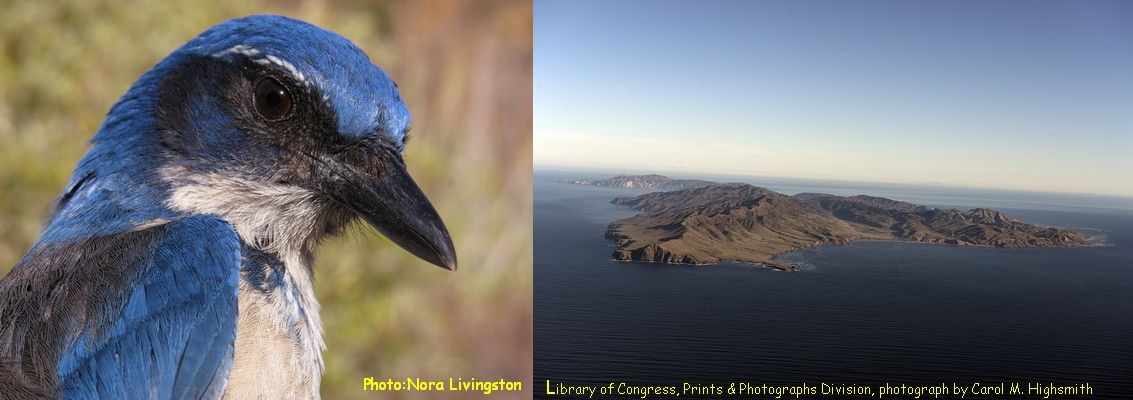
Location:
Farrand Hall, Santa Barbara Museum of Natural History
2559 Puesta del Sol, Santa Barbara, CA 93105
Presented by Russell Galipeau
Measuring 13 inches, the Island Scrub-Jay is distinguished from other scrub-jays by its larger size—almost 1/3 larger than its mainland counterpart. It is restricted to Santa Cruz Island, making it susceptible to any major disaster, a disease outbreak, or widespread land-use changes. Join just-retired Superintendent of Channel Islands National Park Russell Galipeau as he explores efforts by the Nature Conservancy and the National Park Service to conserve this endemic species.
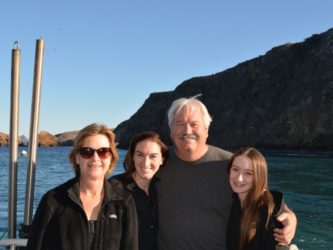 This summer, Russell Galipeau retired after a 40-year career with the National Park Service, the last 15 years serving as Superintendent of Channel Islands National Park. He has worked in parks from Alaska to Florida and Kentucky to California on projects from wolf control to island restoration. Galipeau is a native of St. Augustine, Florida, and has a degree in wildlife ecology from the University of Florida.
This summer, Russell Galipeau retired after a 40-year career with the National Park Service, the last 15 years serving as Superintendent of Channel Islands National Park. He has worked in parks from Alaska to Florida and Kentucky to California on projects from wolf control to island restoration. Galipeau is a native of St. Augustine, Florida, and has a degree in wildlife ecology from the University of Florida.
Doors open at 7:00 pm – join us for refreshments
Sponsored By Santa Barbara Audubon Society
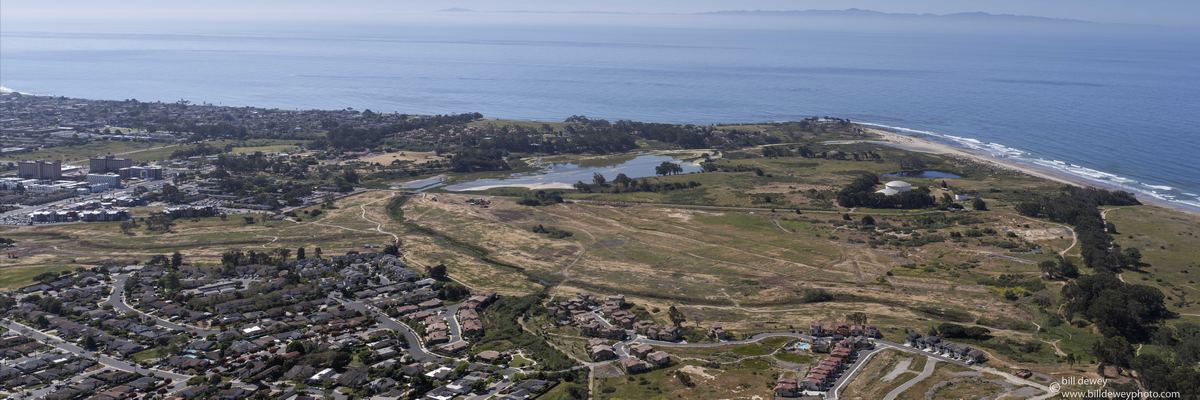
Project in Progress: Restoring the upper arms of Devereux Slough
Presented by Lisa Stratton
Lisa will present “From Golf Course to Wetland,” a brief (17-minute) film about how the restoration project evolved, followed by a presentation on the project in action — from moving the dirt to building the bridges, planting the plants and documenting the functions for birds and hydrology.

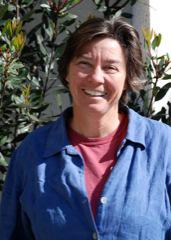 Lisa Stratton, Ph.D. is the Director of Ecosystem Management for UCSB’s Cheadle Center for Biodiversity and Ecological Restoration (CCBER). CCBER manages 300 acres of UCSB open space and spearheaded the North Campus Open Space Restoration Project. Lisa received her Ph.D. in Botany and Conservation Biology from University of Hawaii in 1997 and has been working at CCBER since 2005. She is passionate about restoration and integrating that with education and research opportunities at UCSB.
Lisa Stratton, Ph.D. is the Director of Ecosystem Management for UCSB’s Cheadle Center for Biodiversity and Ecological Restoration (CCBER). CCBER manages 300 acres of UCSB open space and spearheaded the North Campus Open Space Restoration Project. Lisa received her Ph.D. in Botany and Conservation Biology from University of Hawaii in 1997 and has been working at CCBER since 2005. She is passionate about restoration and integrating that with education and research opportunities at UCSB.
Doors open at 7:00 pm – join us for refreshments
Sponsored By Santa Barbara Audubon Society

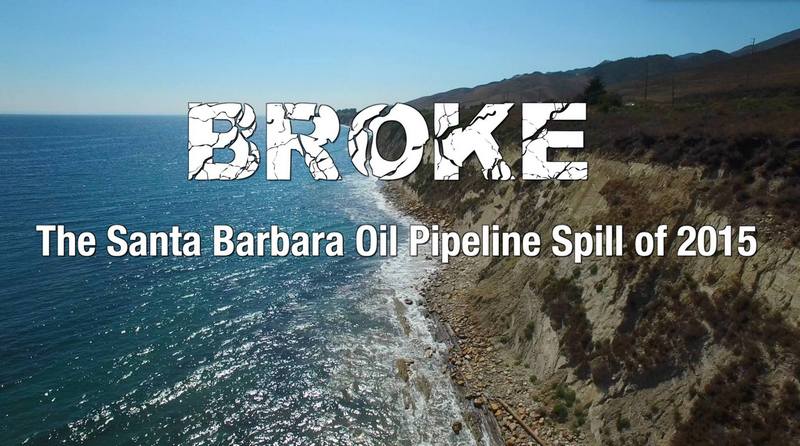 Presented by Gail Osherenko
Presented by Gail Osherenko
 Please join us for a free screening of Broke, a documentary film about the May 19, 2015 Plains All-American Pipeline oil spill on the Gaviota Coast in Santa Barbara County. The film highlights the reaction of citizens who came together in protest marches and healing ceremonies, rescued birds and marine mammals, cleaned the oil off our beaches, and demanded more stringent spill prevention and response.
Please join us for a free screening of Broke, a documentary film about the May 19, 2015 Plains All-American Pipeline oil spill on the Gaviota Coast in Santa Barbara County. The film highlights the reaction of citizens who came together in protest marches and healing ceremonies, rescued birds and marine mammals, cleaned the oil off our beaches, and demanded more stringent spill prevention and response.
It’s a one-hour environmental story with a peek back at the 1969 Santa Barbara oil spill that helped launch the environmental movement, EPA, and clean air and water laws, and a look forward to a fossil free future.
 A Q&A session will follow the screening. Creator Gail Osherenko is an independent documentary film maker, long-time environmental activist, and SB Audubon member. Her other films include Dark Side of the Loon, Arctic Expedition, and Loon Chick’s First Summer.
A Q&A session will follow the screening. Creator Gail Osherenko is an independent documentary film maker, long-time environmental activist, and SB Audubon member. Her other films include Dark Side of the Loon, Arctic Expedition, and Loon Chick’s First Summer.
Doors open at 7:00 pm – join us for refreshments
Sponsored By Santa Barbara Audubon Society

Presented by Mark Holmgren and Adrian O’Loghlen
The Santa Barbara County Breeding Bird Study (BBS) is a database of Santa Barbara County avian breeding sightings. The BBS currently contains more than 5,500 records of sightings. Adrian and Mark will present a detailed description of the timing and distribution of breeding activities of the common breeding species. They will demonstrate how these records can be used for scientific and conservation purposes.
The strength of this effort is greatly improved through continued data gathering, expanding the geographic coverage and increasing the span of years covered. Last year alone 764 new records were submitted to the data base. This year Adrian and Mark are hoping for over 1000 new submittals. A new and easy online method for submitting a breeding record is key to achieving this target, and a demonstration of this procedure will be presented.
Adrian O’Loghlen got his PhD in Behavioral Ecology from UCSB based on research of song dialects in Brown-headed Cowbirds. His post-doctoral research from the University of Washington, Seattle, was on the function of song variation in Song Sparrows. Adrian taught numerous classes at UCSB and UW on the evolution of animal behavior and social behavior in particular. Studying and watching birds are his primary past times.
Mark Holmgren was curator of the Vertebrate Collections at UCSB’s CCBER from 1984 to 2010. Mark birds, travels, and with Adrian coordinates the SB County Breeding Bird Study. Also for SB Audubon, Mark coordinates Kite Watch and serves on the Science and Conservation Committee.
Doors open at 7:00 pm – join us for refreshments
Sponsored By Santa Barbara Audubon Society
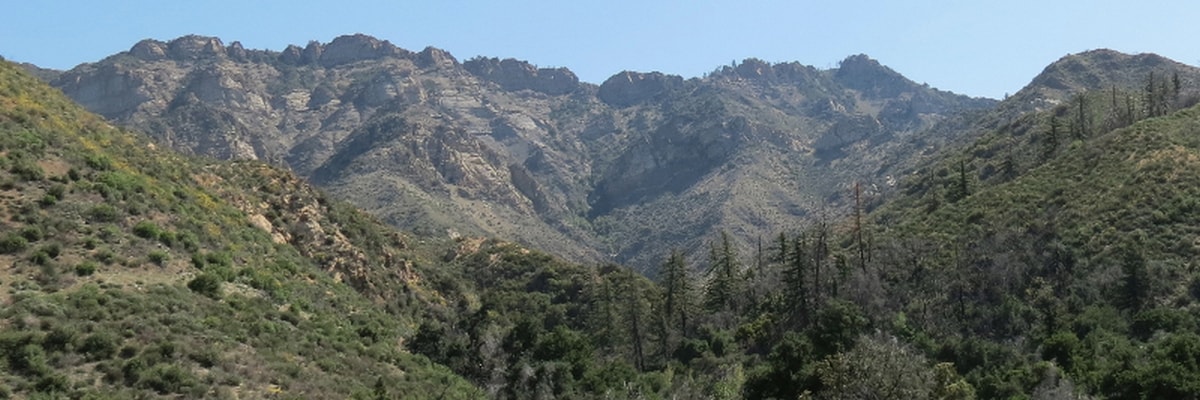
 Presented by James Wapotich
Presented by James Wapotich
This presentation will highlight several historic trails that lead into our back-country, including parts of what are now the San Rafael and Dick Smith Wilderness areas. These trails can still be visited today as part of a day hike or backpacking trip. Join local author James Wapotich as he shares images and stories from his hikes along these historic routes.
James has hiked many of the trails in our local back-country. He is a Volunteer Wilderness Ranger with the Forest Service, and is the author of the Santa Barbara News-Press hiking column, Trail Quest.
Doors open at 7:00 pm
Sponsored By Santa Barbara Audubon Society

Presented by Dennis Ringer
In March of 2017 Dennis experienced a 10-day birding/cultural tour of Cuba. At this month’s program Dennis will share with us photos and experiences he encountered while on his trip.
 Dennis Ringer is an Emeritus Professor of Anthropology and American Ethnic Studies at Santa Barbara City College. He retired in 2006 after 37 years of teaching. He took Joan Lentz’s birding class in 2007 and he has been “hooked” on birding ever since. A friend gave Dennis a camera to add to his basic birding gear in 2008 and “everything” changed again. For Dennis, seeing the birds always comes first and then, the photographs.
Dennis Ringer is an Emeritus Professor of Anthropology and American Ethnic Studies at Santa Barbara City College. He retired in 2006 after 37 years of teaching. He took Joan Lentz’s birding class in 2007 and he has been “hooked” on birding ever since. A friend gave Dennis a camera to add to his basic birding gear in 2008 and “everything” changed again. For Dennis, seeing the birds always comes first and then, the photographs.

Doors open at 7:00 pm
Sponsored By Santa Barbara Audubon Society
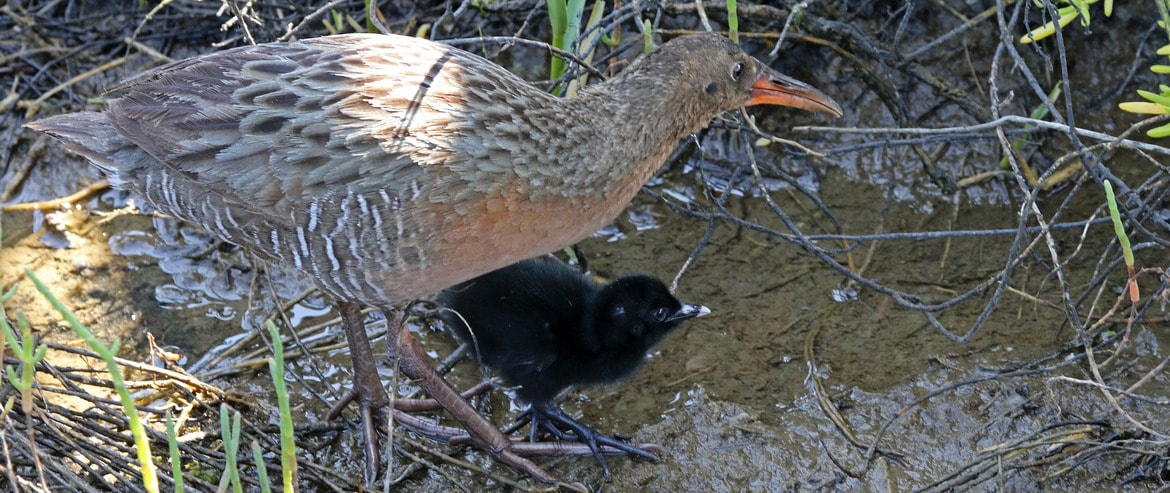
Presented by David and Margaret Carlberg
Orange County’s 1200-acre Bolsa Chica Wetland is a textbook example of how the perseverance of a group of private citizens can block the destruction of a major ecological resource. Through slides and a video, David and Margaret Carlberg will relate their personal experience in one of the most successful environmental battles in the state’s history.
 David is a retired California State University, Long Beach, professor, a past president of the Amigos de Bolsa Chica and the author of a history of the Bolsa Chica Wetland. Margaret is a past president of the Orange County Sea and Sage chapter of the Audubon Society and a retired high school chemistry teacher.
David is a retired California State University, Long Beach, professor, a past president of the Amigos de Bolsa Chica and the author of a history of the Bolsa Chica Wetland. Margaret is a past president of the Orange County Sea and Sage chapter of the Audubon Society and a retired high school chemistry teacher.
Doors open at 7:00 pm
Sponsored By Santa Barbara Audubon Society

Presented by Holly Sherwin
Once nothing but swampland and scrubby forests, Southwest Florida has been subject to many environmental challenges. From early plume-hunting days to recent water wars and an ever-increasing human population, the Sunshine State has had to fight to protect its diverse wildlife for over a century. Thanks in part to the National Audubon Society, birds once on the brink of extinction are now protected and can easily be viewed from the Everglades National Park to Ding Darling Wildlife Refuge, through the 10,000 Islands and into Audubon’s own Corkscrew Swamp Sanctuary. Come enjoy the tales and photos of this remarkably avian-rich corner of the country by educator, writer and guide, Holly Sherwin.

For nearly 10 years Holly worked for the Conservancy of Southwest Florida in Naples, Florida, where she led natural history tours through various local parks and sanctuaries as well as locations in the Florida Keys and Caribbean Islands. She has since migrated to the shores of Santa Barbara, where she currently resides with her husband and teenage son (but still visits her favorite haunts and secret birding spots in Florida).
Doors open at 7:00 pm
Sponsored By Santa Barbara Audubon Society
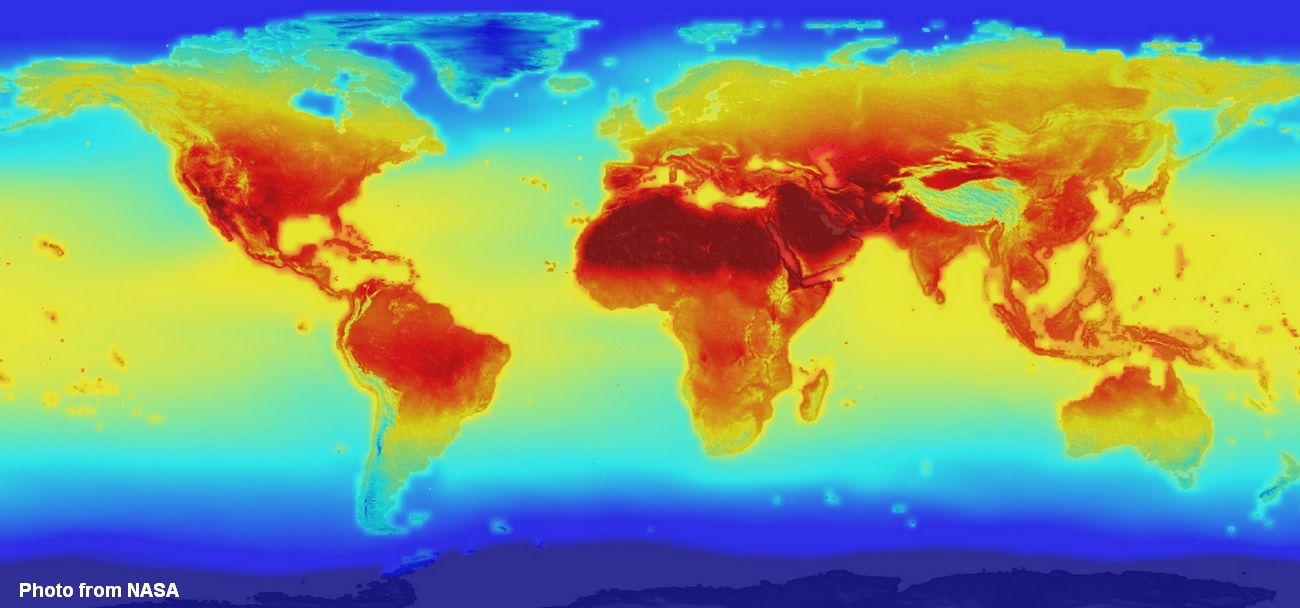
Presented by Karl Hutterer
 For the past several years, Karl Hutterer has focused his energy on advancing climate change literacy. He will start by summarizing some of the basic facts about climate change: where we currently are in terms of changing climates and their effects, and what experts are predicting. Then he will address what each one of us can do to help our planet to “break the fever”.
For the past several years, Karl Hutterer has focused his energy on advancing climate change literacy. He will start by summarizing some of the basic facts about climate change: where we currently are in terms of changing climates and their effects, and what experts are predicting. Then he will address what each one of us can do to help our planet to “break the fever”.
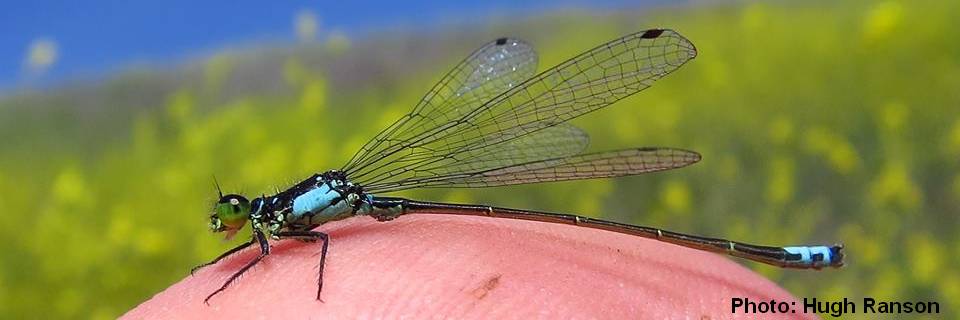
Presented by Hugh Ranson
Cost: Free to the Public

Hugh will talk about the natural history of dragonflies, briefly covering the hows, whens, and wheres of odonata (“ode”) study, before spending the bulk of the time looking at photos of some of the more common dragonflies and the key features that help identify them.
 Hugh became interested in birds at an early age in his native England. Five years ago he became interested in dragonflies and was immediately smitten; he has since spent hundreds of hours in the field, helping further our (limited) knowledge of the dragonflies of Santa Barbara County. He teaches fifth grade in Goleta, and can always be found on his lunch break at a local pond, watching, netting, and photographing dragonflies.
Hugh became interested in birds at an early age in his native England. Five years ago he became interested in dragonflies and was immediately smitten; he has since spent hundreds of hours in the field, helping further our (limited) knowledge of the dragonflies of Santa Barbara County. He teaches fifth grade in Goleta, and can always be found on his lunch break at a local pond, watching, netting, and photographing dragonflies.

Presented by Annie Little, Wildlife Biologist, U.S. Fish & Wildlife Service
Cost: Free to the Public
Since 2002, the Montrose Settlements Restoration Program (MSRP) has been restoring natural resources on the Channel Islands harmed by the pesticide DDT. This talk will highlight the various MSRP bird restoration efforts on the California Islands, including the: 1) Bald Eagle reintroduction program, 2) Peregrine Falcon monitoring effort, 3) seabird habitat restoration and social attraction program on Santa Cruz, Anacapa and Santa Barbara Islands, and 4) seabird restoration program on the Baja California Pacific Islands. This talk will highlight the successes and challenges of these restoration projects, and the value of partnerships.
 For the past 21 years, Annie Little has worked as a Wildlife Biologist for the U.S. Fish and Wildlife Service. Based out of the Carlsbad Fish and Wildlife Office, she initially worked on endangered species conservation. Since 2002, Annie has been the MSRP avian biologist and is currently stationed at Channel Islands National Park. In this role, she oversees the implementation of multiple bird restoration projects on the California Islands. She is also actively involved with promoting trilateral island conservation as part of the Canada/U.S./Mexico Trilateral Committee. Annie has a B.S. in Biology: Ecology, Behavior, and Evolution from the University of California, San Diego. She has been fortunate to do fieldwork in remote places of the world, including Ecuador and the subantarctic island of Crozet, but she is most happy working close to home on the Channel Islands.
For the past 21 years, Annie Little has worked as a Wildlife Biologist for the U.S. Fish and Wildlife Service. Based out of the Carlsbad Fish and Wildlife Office, she initially worked on endangered species conservation. Since 2002, Annie has been the MSRP avian biologist and is currently stationed at Channel Islands National Park. In this role, she oversees the implementation of multiple bird restoration projects on the California Islands. She is also actively involved with promoting trilateral island conservation as part of the Canada/U.S./Mexico Trilateral Committee. Annie has a B.S. in Biology: Ecology, Behavior, and Evolution from the University of California, San Diego. She has been fortunate to do fieldwork in remote places of the world, including Ecuador and the subantarctic island of Crozet, but she is most happy working close to home on the Channel Islands.

Presented by Steve Senesac
Cost: Free to the Public
The Tree Swallow naturally nests in tree cavities (often made by woodpeckers). Human development frequently removes many trees, and those that remain are often groomed in a way that minimizes dead branches appropriate for cavity nests. Such habitat disturbance is the likely reason why Tree Swallows dropped to the status of being an uncommon breeder around Santa Barbara and Ventura. Starting in the 1980s, Jan Wasserman in Ventura and later Dave Eldridge and Don Schroeder in Santa Barbara worked to reverse this trend by developing nest box programs.
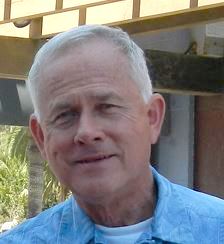 Steve Senesac stepped into their shoes in 2015 when he became the Science Chair for SBAS. Find out what Steve has been doing to reinforce our efforts in this area and hear his analysis of years of data that have produced a number of fascinating facts and identified thought-provoking trends.
Steve Senesac stepped into their shoes in 2015 when he became the Science Chair for SBAS. Find out what Steve has been doing to reinforce our efforts in this area and hear his analysis of years of data that have produced a number of fascinating facts and identified thought-provoking trends.

Presented by Paul Collins
Paul will examine changes occurring with the breeding avifauna of the Channel Islands as a result of intensive conservation and restoration efforts during the past half century. Control and/or removal of introduced herbivores, rats, feral cats, and Golden Eagles have helped to facilitate the recovery of habitats and species adversely affected by overgrazing and/or predation. Decline of the pesticide DDT in the marine environment of the southern California Bight has led to the recovery of marine birds. This talk will identify what species have been removed, reintroduced, or have established new breeding populations on the islands. Significant changes include the addition of 26 species that have either been confirmed or are suspected to have nested for the first time on one or more of the Channel Islands.
 At the Santa Barbara Museum of Natural History for the past 43 years, Paul is currently the Curator of Vertebrate Zoology. He has conducted research on a wide array of taxa on the Channel Islands during the past 40 years and as a result has an extensive knowledge of the terrestrial and marine vertebrate fauna of the islands. He received a BS in zoology in 1973 and an MA in zoology in 1982 from the University of California Santa Barbara where he studied the origin and evolution of the Island fox for his Master’s thesis. Paul has published widely on a variety of topics related to the research he has conducted with the fauna of the Channel Islands. He recently published a checklist to the birds of the Channel Islands and is currently working on a book about them.
At the Santa Barbara Museum of Natural History for the past 43 years, Paul is currently the Curator of Vertebrate Zoology. He has conducted research on a wide array of taxa on the Channel Islands during the past 40 years and as a result has an extensive knowledge of the terrestrial and marine vertebrate fauna of the islands. He received a BS in zoology in 1973 and an MA in zoology in 1982 from the University of California Santa Barbara where he studied the origin and evolution of the Island fox for his Master’s thesis. Paul has published widely on a variety of topics related to the research he has conducted with the fauna of the Channel Islands. He recently published a checklist to the birds of the Channel Islands and is currently working on a book about them.
Doors open at 7:00pm
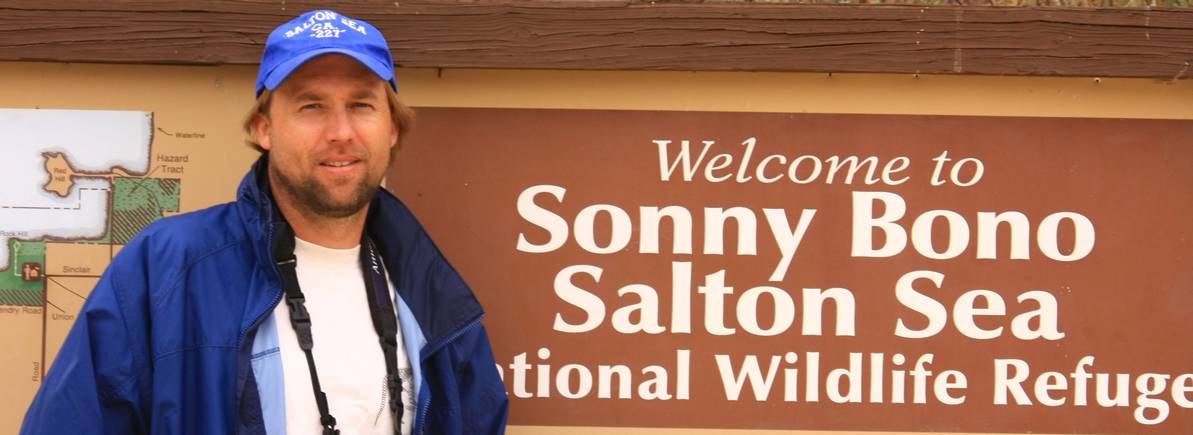
The Salton Sea is one of the world’s most important stops for birds traveling the Pacific Flyway – and visiting the Salton Sea at any time of year is a birdwatcher’s delight. Tens of thousands of birds begin arriving in late September, sometimes forming living clouds across crystal clear skies. Birds that overwinter at the sea will depart by May, traveling as far north as Alaska. Some will remain to brave the hot summer and nest at the sea – so there are always exciting birds to be found at any time of the year.
Kurt Leuschner is a Professor of Natural Resources at College of the Desert where he teaches courses on Conservation, Entomology, Field Ornithology, Native Plants, and GPS Navigation. He has a Bachelor’s degree in Zoology from U.C. Santa Barbara and a Master’s in Wildlife Ecology from the University of Florida. Kurt has extensive experience abroad including a year at the University of Nairobi, a semester studying Tropical Biology in Costa Rica, 2 years in the Peace Corps working in Tanzania’s Wildlife Division, Master’s research in the Kibale Forest of Uganda, and 2 years running a hotel and horse-riding school in the Bavarian Alps of Germany. Kurt continues to take groups on photographic safaris to Africa, New Zealand, the Galapagos, and various locations in the southwestern United States. Kurt is very active locally – volunteering for the Mt. San Jacinto State Park, the Living Desert, the BLM, the Anza-Borrego Desert Natural History Association, and the National Audubon Society. He is the founder of the Desert Cities Bird Club, on the Board of Directors of Western Field Ornithologists, and is past President of the Natural Science Collaborative. His most recent publications are the Palms to Pines Birding and Nature Trail map and brochure and a Field Guide to Desert Golf Course Wildlife. Kurt also teaches weekend courses and workshops on birdwatching, insects, GPS, and backyard habitats for UCR Extension, the Desert Institute, the Desert Studies Center, and the Living Desert. His latest research project involves the sound recording of the various subspecies of Western Scrub-Jay.

Characterized by baking drought and raging floods, the Australian outback is one of the most unpredictable environments in the world. The birds that live in this boom-bust landscape have developed incredible and surprising adaptations to these harsh conditions. Many birds are nomadic, moving around the landscape. For years, the patterns of these movements were unknown. In this talk, Claire tells how we are beginning to unlock the mysteries of these desert nomads and the implications for conservation of these unique birds. This talk will include superfluous tales and photos of Australian birds.
Claire Runge is a postdoctoral researcher at the National Center for Ecological Analysis & Synthesis in downtown Santa Barbara. She completed her PhD thesis in 2015 at the University of Queensland in Brisbane, Australia. Her thesis focused on understanding how to conserve migratory and nomadic birds. For the past year she has been working in partnership with The Nature Conservancy and the Sage Grouse Initiative to find ways to conserve Sage Grouse habitat while improving the livelihoods of ranchers. Find out more about the project here http://snappartnership.net/groups/better-land-use-decisions/ and her other work here http://clairerunge.wordpress.com/ Claire also really loves birds, and is sad to say that after working on Sage Grouse for a year, she has yet to see one.

For the past few years Don Klabunde has been studying the behavior and reproductive success of species that live along the Arroyo Simi, a 19-mile-long creek that runs from the city of Simi Valley into Moorpark. Join Don for a photographic journey where we discover the secret lives of birds hidden away in plain sight within our urban habitat.
Don Klabunde is a retired physicist, life-long photographer, and Chapter Photographer for Conejo Valley Audubon Society (CVAS). Some of his interests include nature and astrophotography, animal behavior and evolution, California native gardening, and observing the local wildlife.
Doors open at 7:00 pm
Sponsored By Santa Barbara Audubon Society

Presented by Dr. Arthur Sylvester & Elizabeth O’Black Gans
Within an eight hour drive of any point in southern California, you can see the results of any kind of geologic process, from desert erosion to glaciation, from volcanism to landsliding; any kind of rock from Precambrian gneiss to the latest sandstone stratum. Southern California has ancient and recent volcanoes, and besides the San Andreas, it has many other active and inactive faults. “Roadside Geology of Southern California” will guide you to see and understand these and many other geologic features so nicely displayed along southern California highways.

Presented by Anna Howell
Scientists estimate that one third of the world’s food crops and four-fifths of its flowering plants depend on some form of insect pollination, mainly by bees. Yet honeybees ane native bees around the globe are declining in numbers. Discover the fascinating world of bees and its impact on the ecosystem.

Brent Paull-Photographer
Brent’s presentation will feature about 300 of his favorite wildlife images, as well as photography tips, and stories from his photo safaris. He often touches upon photography field tactics, image processing tips, wildlife tips, or just plain old facts about succeeding on photo safaris. Brent had the 2013 California Wildlife Photo of the Year. His images have been published throughout the United States and in a number of foreign countries including Canada, Germany, and Switzerland. He has had approximately 1100 publication credits and over 700 commercial image sales as well as 28 published articles and 10 Magazine Covers. Besides magazines and newspapers, his images have appeared in books, online magazines, business brochures, product packaging, professional reports, roadside billboards, nature guides, government reports and brochures, magazine advertising, and in calendars, on credit cards, etc.
Brent was born in 1959 in Redwood City, and raised in Gilroy, California. His family camped each summer in Yosemite National Park or at Lake Tahoe and spent countless hours exploring the California coast and the Sierra Nevada Mountains.
During his senior year at BYU he and a friend made a trip to Yellowstone National Park in September 1985. That trip led to his first published article and published photos and a re-awakening of his adventures as a youth in California. From that point on he was determined to create a life for himself in nature in the western United States, through photography and by writing about all he saw and discovered.
After more than a decade of shooting freelance for magazines he ventured into portrait photography. His strengths as a portrait photographer come from understanding light, composition, and balance – skills he learned as a nature photographer. He spends most of his time leading photo safaris around the west and teaching photography in 22 cities in California, still does some commercial photography, and actively sells his images as stock and fine art.
Find out more about Brent Paull at his website http://www.amwestphoto.com/index.htm
Doors open at 7:00 pm
Sponsored By Santa Barbara Audubon Society
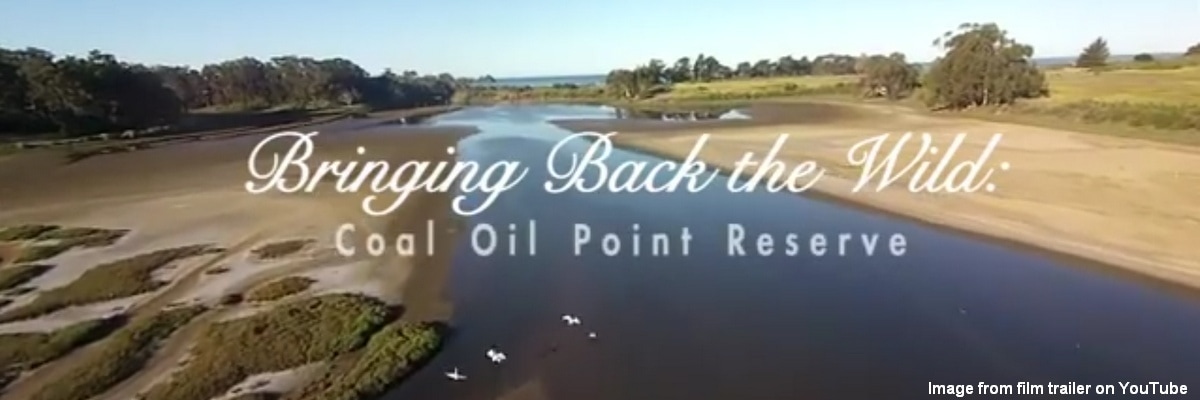
Santa Barbara Audubon
is proud to be presenting this film in partnership with
the Santa Barbara Museum of Natural History.
Cost: Tickets $10 – See below
This 2015 film by local film maker Michael Love, tells the inspiring story of the restoration of Coal Oil Point Reserve (COPR). COPR’s native wetlands and precious coastal-strand environment are home to the threatened Western Snowy Plover and Tidewater Goby. After a decade of care by COPR Director Cristina Sandoval, the Snowy Plover is breeding again and the protected and yet accessible reserve attracts a myriad of birds. Birders, researchers, and nature enthusiasts flock to the area to observe the wildlife. In contrast to ongoing tragedies of human environmental degradation, the film reveals the people behind this successful restoration project and their invitation to the public to respect and enjoy it.
Following the film, writer/director Michael Love and Dr. Cristina Sandoval will be present for discussion.
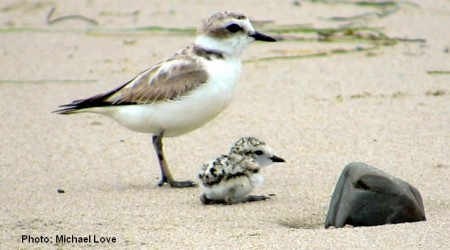
Tickets:
Each ticket entitles the bearer to a chance to win a door prize!
Buy tickets in advance here: http://www.sbnature.org/tickets/
Tickets may also be purchased at the door for cash only.

Cost: Free to the public
There’s a lot of energy and enthusiasm in Santa Barbara Audubon, and we want to share it with you. Come early for refreshments and meet the birds who live in our Audubon Aviary. Hear about exciting new things and how you can help. Everyone is welcome.
7:00: Meet our rescued raptors. Enjoy homemade refreshments.
7:30: Meet our Board and hear what we’re doing
- Education: Walks and Trips, PAL, WBC4Kids, Meet Your Wild Neighbor (Viewing of the new EITS promotional video)
- Conservation: Response to the oil spill and encroachment on habitat
- Restoration: restoration efforts and how you can get involved
- Preview of the new movie Bringing Back the Wild – our program for February
8:30: Q & A
Learn what we do behind the scenes in monthly Board and Committee meetings. Pick up an informative packet with our new Five-Year Strategic Plan. Hear how your membership dues and donations work for the benefit of local birds.
Doors open at 7:00 pm

Sponsored By Santa Barbara Audubon Society

Cost: Free to the public
One of our area’s most diverse sets of habitats and landscapes
celebrates a major birthday this year. This fall marks the 50th anniversary of the University of California’s Natural Reserve System.
Locally, Santa Ynez Valley’s Sedgwick Ranch, Coal Oil Point, Carpinteria Salt Marsh, Santa Cruz Island, San Marino Ranch, and
even the Valentine Reserve in the eastern Sierras are sparkling jewels
in the Reserve’s crown–places where generations of faculty, students,
staff, and visiting research scientists can venture into the field for deep
research, while concurrently managing these disparate ecosystems for
the public benefit, under UC’s broad umbrella.
Long time Audubon friends like Bill Murdoch, Scott Cooper, Wayne
Ferren, Cris Sandoval, and Kate McCurdy have been intimately
connected with local Reserve sites and achieved remarkable research
breakthroughs. At the same time, the Reserve has hosted generations
of hikers, birders, and visitors of every sort to meet nature first hand, at
no cost.
Join us when Trish Holden, Ph.D., Director of the Natural Reserve
System, shares amazing photos and compelling science that emerge
every quarter from one of our area’s most beloved, and least understood, group of ecosystems.
Doors open at 7:00 pm
Sponsored By Santa Barbara Audubon Society
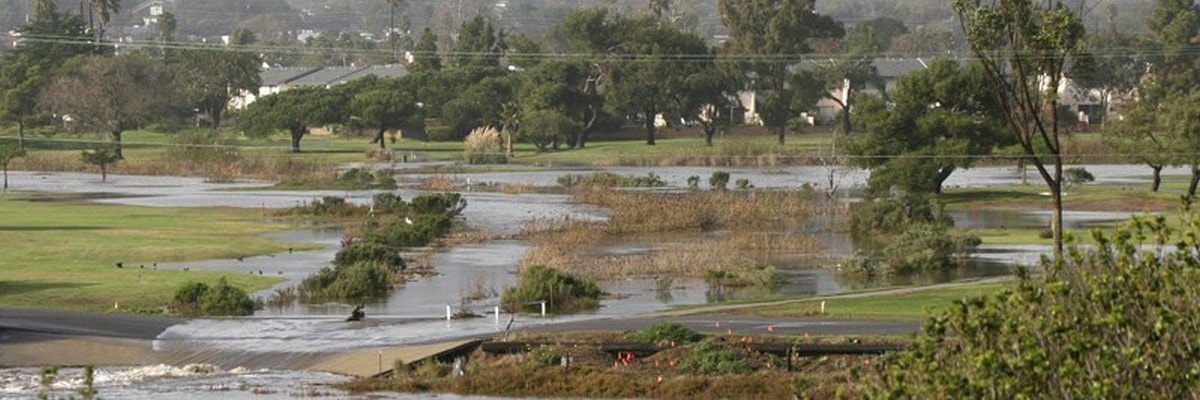
Cost: Free to the public
Dr.  Lisa Stratton has been the Director of Ecosystem Management for UCSB’s Cheadle Center for Biodiversity and Ecological Restoration (CCBER) since 2005 (www.ccber.ucsb.edu). As the manager of the campus lagoon and other open space areas on campus, Dr. Stratton has been active in pursuing opportunities to improve water quality and provide habitat through bioswales and treatment wetlands. She has been working to restore the former grandeur and functionality of Devereux Slough since 2010.
Lisa Stratton has been the Director of Ecosystem Management for UCSB’s Cheadle Center for Biodiversity and Ecological Restoration (CCBER) since 2005 (www.ccber.ucsb.edu). As the manager of the campus lagoon and other open space areas on campus, Dr. Stratton has been active in pursuing opportunities to improve water quality and provide habitat through bioswales and treatment wetlands. She has been working to restore the former grandeur and functionality of Devereux Slough since 2010.
UCSB’s 90 acre restoration project includes expansion of a diversity of habitats from sub-tidal to native bunch grass for a wide variety of wildlife, from the endangered Tidewater Goby and the threatened Western Snowy Plover to hawks and herons. This project will include public access trails, interpretation, and wildlife refugia.
Dr. Stratton received her PhD at University of Hawaii-Manoa, her Masters from University of Wisconsin-Madison and her undergraduate degree at Stanford. She has been a change agent on the landscape committee since the inception of UCSB’s sustainability commitment and worked towards promoting sustainable, non-invasive, low water landscapes that celebrate UCSB’s unique location within a matrix of natural habitats and wetlands.
Doors open at 7:00 pm
Sponsored By Santa Barbara Audubon Society

Cost: Free to the public
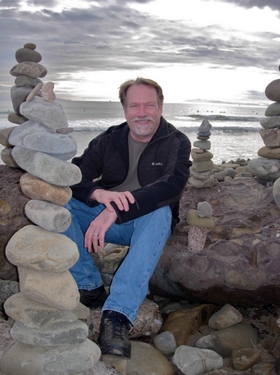 Frank J. Hein serves as the Director of Exhibits at the Santa Barbara Museum of Natural History where his extensive background in wildlife ecology is put to good use.
Frank J. Hein serves as the Director of Exhibits at the Santa Barbara Museum of Natural History where his extensive background in wildlife ecology is put to good use.
In his previous position as Director of Education for the Catalina Island Conservancy, he trained all of the island tour guides and businesses about the formation of the islands, how life arrived, adapted, evolved and eventually came to thrive there. These trainings ultimately led to the publication of his book“Wild Catalina Island”which has quickly become the “go-to”resource for anyone interested in the wild world just off our coast.
Join us for a walk through time that will leave you with a new, and perhaps a little different perspective on the Channel Islands and what makes them such an ecologically unique national treasure.
Frank holds a Bachelor’s degree in Wildlife Management and in Biology from the University of Stevens Point, Wisconsin, and a Masters in Environmental Policy and Management from the University of Denver.
He’s studied a wide variety of wildlife and his work at the Museum continues a lifelong dedication to connecting people to nature for the benefit of both.
Doors open at 7:00 pm
Sponsored By Santa Barbara Audubon Society

Speaker: Aaron Budgor
Cost: Free to the public
Aaron Budgor will be presenting photographs and sharing stories from his recent visit to Peru. Home to sections of the Andes Mountain Range and the Amazon Rainforest, Peru houses astounding avian diversity. Notable avifauna found in Peru include the Andean Cock-of-the-rock (regarded as the national bird of Peru), the Great Inca-finch, and the Inca Tern. A wide range of unique tanagers and hummingbirds are also seen in Peru. Peru has long been a destination for birders, with famed ornithologist Theodore Parker III stating “Peru offers ‘bird-enthusiasts’ more than any other country in the world.”
 Dr. Aaron Budgor was founder and CEO of Aaron Budgor and Associates, a consulting firm providing technology intelligence and solutions to builders, providers, and users of networking systems. He received a BS in Chemistry, Magna cum Laude, Phi Beta Kappa from UCLA; and a Ph.D. in Chemical Physics from the University of Rochester. He has held professorships at UC Davis, University of Mexico, and Naval Postgraduate School. He is the author of over 200 scientific and managerial papers, three books on electro-optics and lasers, and one patent awarded in chaotic communications. Dr. Budgor is married, has two children, and resides in Santa Barbara.
Dr. Aaron Budgor was founder and CEO of Aaron Budgor and Associates, a consulting firm providing technology intelligence and solutions to builders, providers, and users of networking systems. He received a BS in Chemistry, Magna cum Laude, Phi Beta Kappa from UCLA; and a Ph.D. in Chemical Physics from the University of Rochester. He has held professorships at UC Davis, University of Mexico, and Naval Postgraduate School. He is the author of over 200 scientific and managerial papers, three books on electro-optics and lasers, and one patent awarded in chaotic communications. Dr. Budgor is married, has two children, and resides in Santa Barbara.
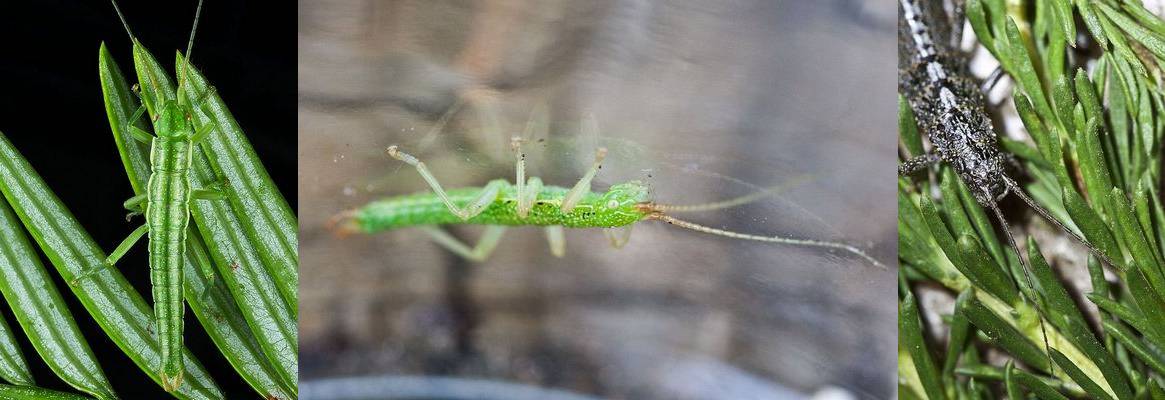
Speaker: Dr. Patrik Nosil
Cost: Free to the public
Patrik describes how studies of plant-feeding stick insects in California have yielded new insights into the adaptation of organisms to their environment, the formation of new species, and the nature of ecological communities. Ecological field studies can now be combined with genome sequencing to better understand biological diversity. The synthesis of traditional field ecology and cutting-edge genetic sequencing is creating opportunities for continuing advancement in evolutionary biology.

Mating pair of the striped morph of the chaparral walking stick, Timema cristinae resting on chamise.
Patrik and his lab’s work have a local connection. Timema cristinae, one of their target study stick insects, was first described by and named for Cristina Sandoval, Director of Coal Oil Point Reserve.
 Patrik Nosil is an ecologist and evolutionary biologist based at the University of Sheffield in the UK. He has conducted field studies of insects in California for the last 15 years. His lab’s research focuses on the evolutionary processes driving and constraining the formation of new species, in particular the role of adaptation to new ecological environments, via natural selection, in the speciation process.
Patrik Nosil is an ecologist and evolutionary biologist based at the University of Sheffield in the UK. He has conducted field studies of insects in California for the last 15 years. His lab’s research focuses on the evolutionary processes driving and constraining the formation of new species, in particular the role of adaptation to new ecological environments, via natural selection, in the speciation process.

Two Screenings:
1:00 p.m. UPDATE: Now with guest star Morro the Pelican 1:00 p.m. only!
5:00 p.m.
Special appearance by Filmmaker Judy Irving & husband Mark Bittner, the “star” of Judy’s film “The Wild Parrots of Telegraph Hill”. They have generously provided their support to our Birdathon. After each showing there will a question and answer session with Judy and Mark.
There will now be an appearance by Pelican Morro (co-star of Pelican Dreams) with his care takers. See links at the bottom of this page.
Cost: $15
Buy at the door
Or guarantee a seat – buy a ticket online at:
https://tickets.ensembletheatre.com/TheatreManager/1/login?event=158
Description:
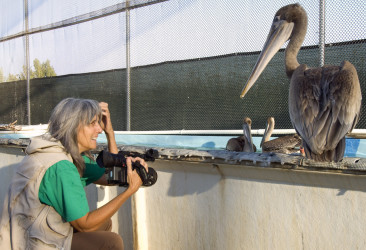 With her Wild Parrots of Telegraph Hill, filmmaker Judy Irving captured the inner lives of San Fran’s psittacine citizens. Now she’s turned her camera on pelicans with her new documentary Pelican Dreams. Irving presents the journey of Gigi, an injured pelican rescued on the Golden Gate Bridge, and in the process weaves a stirring conservation portrait of one of America’s oddest and most beloved birds.
With her Wild Parrots of Telegraph Hill, filmmaker Judy Irving captured the inner lives of San Fran’s psittacine citizens. Now she’s turned her camera on pelicans with her new documentary Pelican Dreams. Irving presents the journey of Gigi, an injured pelican rescued on the Golden Gate Bridge, and in the process weaves a stirring conservation portrait of one of America’s oddest and most beloved birds.
Ms. Irving explains: “Because pelicans have an ancient magic about them, and because their near-extinction and recovery parallel our human relationship to the environment, I’ve been wanting to make a film about them for years, but I needed a good story!”
Movie info on Rotten Tomatoes
Watch the Pelican Dreams trailer on Vimeo
Read about Morro in San Luis Obisbo’s The Tribune (includes YouTube clip)
Visit Morro’s Facebook page

Cost: $20 at the door. All proceeds benefit Santa Barbara Audubon.
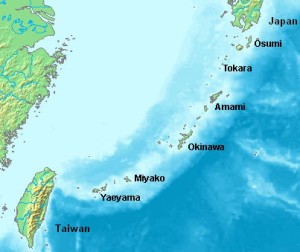 You may have birded with Brad Schram in the morning, but don’t miss this evening’s presentation by Brad on his adventures birding Okinawa and Amami islands of the Japanese outer island chain the Ryukyus and Tobishima island located NW of Honshu. Okinawa and Amami both have multiple endemic species of birds, the flightless Okinawa Rail (or Yanbaru) being one.
You may have birded with Brad Schram in the morning, but don’t miss this evening’s presentation by Brad on his adventures birding Okinawa and Amami islands of the Japanese outer island chain the Ryukyus and Tobishima island located NW of Honshu. Okinawa and Amami both have multiple endemic species of birds, the flightless Okinawa Rail (or Yanbaru) being one.
Pictured above is the Okinawa Rail on Brad’s left, and the Narcissus Flycatcher, a migrant of Tobishima, on his right.
 Tobishima Island is a small fishing island with some native forest and neat vegetable gardens that is famous among Japanese birders for its “Golden Week” each year (1st week in May) that is bound to bring lots of passage Asian migrants–much like California birders going to desert migrant traps to look for vagrants. Tobishima is located 24 miles off Sakata Port and still retains unsullied natural beauty. It takes about two hours to go around the island and there are no traffic lights.
Tobishima Island is a small fishing island with some native forest and neat vegetable gardens that is famous among Japanese birders for its “Golden Week” each year (1st week in May) that is bound to bring lots of passage Asian migrants–much like California birders going to desert migrant traps to look for vagrants. Tobishima is located 24 miles off Sakata Port and still retains unsullied natural beauty. It takes about two hours to go around the island and there are no traffic lights.
Brad is the author of the last two editions of the ABA/Lane Guide:
A Birder’s Guide to Southern California. Once president of our Audubon chapter, he leads trips worldwide for Victor Emanuel Nature Tours (VENT), having birded on all continents and scores of the world’s oceanic islands.
Brad became fascinated with birds as a child in the mountains of California, the start of an enthusiasm that has modified and enriched his life. Since his early retirement from the business world in 1996, he has led birding tours in much of the American West, as well as Alaska, Antarctica and the sub-antarctic islands, Hawaii, Iceland-East Greenland, Kenya, and Trinidad and Tobago. While serving as bird-naturalist on adventure cruise ships, his travels have included Kamchatka, the Aleutians, and the Bering Sea; numerous islands throughout Micronesia, Polynesia, and Melanesia; the Canadian High Arctic; and Antarctic voyages. He lives with his wife Dianne in Arroyo Grande, California.

Cost: Free to the public
Channel Islands National Park is a local and national gem right in our backyard. Often referred to as the “Galapagos of North America,” the five islands within the national park are home to a variety of unique flora 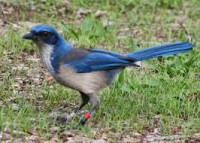 and fauna, including bird species such as the endemic Island Scrub-Jay and the Island sub-species of the Loggerhead Shrike. Managing the avifauna of these islands presents a unique challenge due to the isolation of the islands and an extensive history of impacts to the habitat quality of the islands through introduced species and extensive human activities. Tim Coonan will discuss these management challenges and the conservation and monitoring programs in place to protect these unique birds and their habitats.
and fauna, including bird species such as the endemic Island Scrub-Jay and the Island sub-species of the Loggerhead Shrike. Managing the avifauna of these islands presents a unique challenge due to the isolation of the islands and an extensive history of impacts to the habitat quality of the islands through introduced species and extensive human activities. Tim Coonan will discuss these management challenges and the conservation and monitoring programs in place to protect these unique birds and their habitats.
Landbird populations and species compo sitions on the islands can vary annually, depending on mainland species that reach the islands, habitat variation, environmental conditions, com petitors or predators that arrive or leave the islands, or areas subject to human disturbance. Most bird species probably have experienced a loss of preferred food and shelter due to extensive alteration of the islands’ scrub habitats.
Nine raptor species live in the park and are primarily seen on Santa Cruz and Santa Rosa. Hawks and owls also occur intermittently on Anacapa, San Miguel, and Santa Barbara, which have limited habitat to support these birds. Several bird species disappeared from the park during the 20th century. An endemic subspecies of song sparrow on Santa Barbara Island was driven to extinction as a result of habitat destruction by introduced rabbits, direct predation by feral cats, and a fire in 1959 that destroyed much of its habitat. Bald eagles and peregrine falcons historically bred on the islands, but largely extirpated due to harassment, shooting, egg stealing, and reproductive failure caused by organochlorine pesticides such as DDT. However, both of these species are presently making a comeback due to reintroduction efforts. Peregrines were reintroduced on the islands in the 1980s and bald eagles were reintroduced starting in 2002.
 Tim Coonan has worked for the National Park Service for 30 years, and has been a biologist with Channel Islands National Park since 1992. He leads the park’s programs in terrestrial monitoring and restoration. A landbird monitoring program has existed since 1993 as part of the Park’s long-term ecological monitoring program. Since 1999 Tim has also led the Park’s recovery program for the endangered island fox. Tim received an undergraduate degree in biology from the University of Norte Dame and a masters in biology from Northern Arizona University.
Tim Coonan has worked for the National Park Service for 30 years, and has been a biologist with Channel Islands National Park since 1992. He leads the park’s programs in terrestrial monitoring and restoration. A landbird monitoring program has existed since 1993 as part of the Park’s long-term ecological monitoring program. Since 1999 Tim has also led the Park’s recovery program for the endangered island fox. Tim received an undergraduate degree in biology from the University of Norte Dame and a masters in biology from Northern Arizona University.
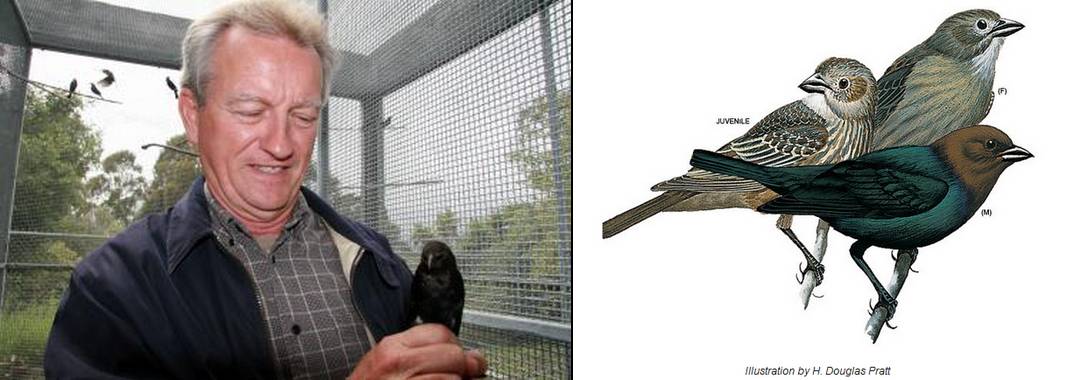
Cost: Free to the Public
Songbirds are one of the very few groups of animals known to learn their vocal behavior, i.e. their songs, and are used extensively as models for research into language acquisition and speech development in humans. There are many striking parallels between song development in songbirds and how infants and young children learn to speak a language.
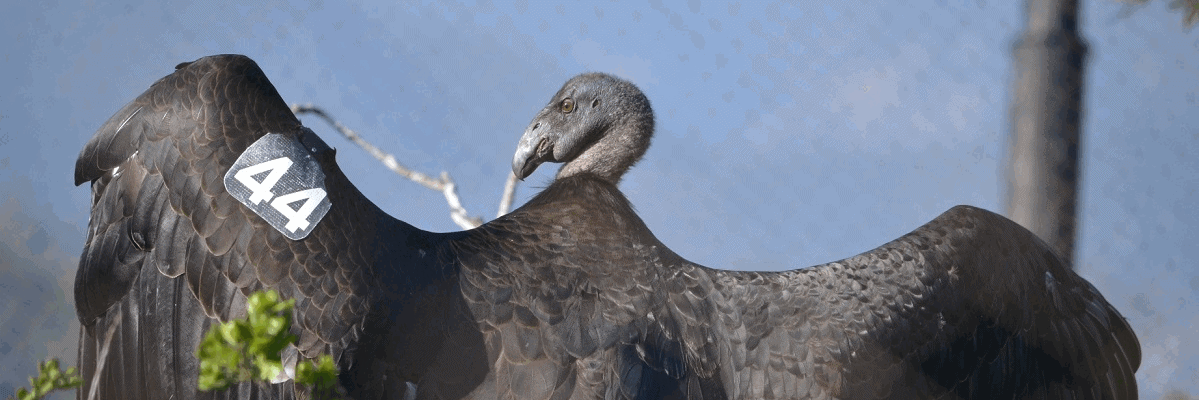
Since 2002, when Santa Barbara Zoo became an official member of the California Condor Recovery Program, it has been an active collaborator with the program, providing support for condor reintroduction efforts. The Zoo’s maintenance team traveled to Baja California to help build condor release facilities with Mexican condor partners. Zoo staff have also worked onsite with the Ventana Wildlife Society in Big Sur. The Zoo recently received Ventana’s Lapanski Award for, among other projects, building a consolidated rearing pen for young condors awaiting release into the wild.
Santa Barbara Zoo is one of only four zoos in the world to display endangered California Condor.
Dr. Estelle Sandhaus is Director of Conservation and Research at the Santa Barbara Zoo. She leads the Zoo’s conservation research activities both in the field and at the Zoo. She helped develop the protocol and trained volunteers and staff for a “nest watching” program now in its third season. Dr. Sandhaus is recruiting condor nest watchers to start in the early spring.
Photo via Jenny Slaughter and http://www.aspeneg.co
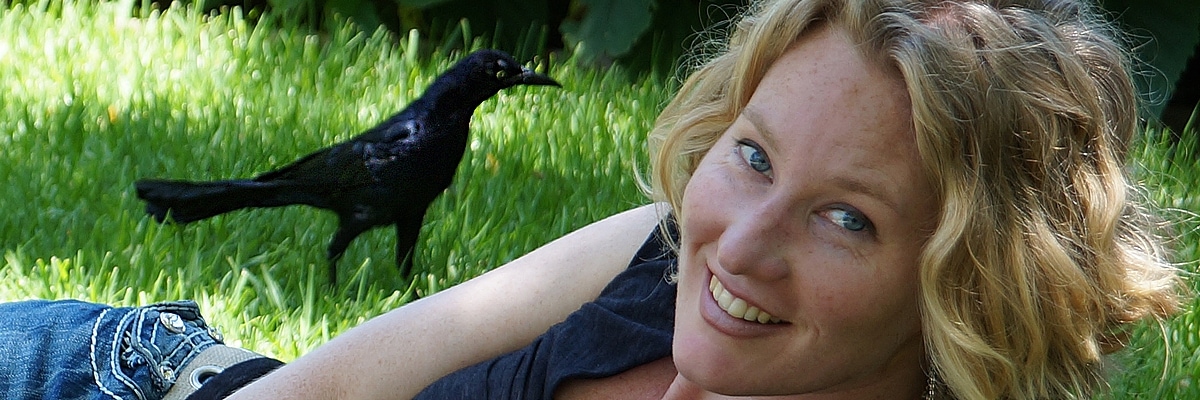
Dr. Corina Logan, Junior Research Fellow, SAGE Center for the Study of the Mind at UCSB, will present her research on how New Caledonian crows learn about and solve foraging problems.

What is the Pacific Flyway?
The Pacific Flyway is an aerial superhighway stretching nearly 10,000 miles from Alaska to Patagonia. It encompasses fewer U.S. states and more Globally-Important Bird Areas than any of the other three flyways in North America. Each year at least a billion birds of some 350 species travel the Flyway during their annual migrations, north in the spring to their nesting grounds and south in the fall to their winter homes.
But this represents only a fraction of the birds that used the Flyway a century ago. Some species, such as the Black-footed Albatross and Least Tern, are in serious trouble. Even many common birds, such as the Western Sandpiper, have become far less abundant. Habitat loss, water diversion for agriculture and development, diminishing food resources, and climate change all threaten the birds of the Flyway.
To combat this alarming trend, Audubon has been working for nearly 110 years to safeguard birds and their ecosystems in North America and beyond. Join Audubon Vice President Michael Sutton for an evening to celebrate recent victories on behalf of birds and discuss the challenges and opportunities ahead along the Pacific Flyway.
More about the Michael Sutton:
Michael Sutton is Vice President, Pacific Flyway for National Audubon Society and is based in Carmel Valley, California.
Michael Sutton is a social entrepreneur and conservation leader who currently serves as Vice President, Pacific Flyway with the National Audubon Society. He serves as a member of Audubon’s National Leadership Team and oversees Audubon’s conservation programs including a $20 million budget and more than 100 professional staff in California, Washington, and Alaska.
Background:
In 2007 and again in 2009, Governor Schwarzenegger appointed Mike as a member of the California Fish and Game Commission. He was elected President of the Commission in early 2013. Mike also serves as summer faculty at the Vermont Law School, where he teaches ocean & coastal law. He recently coauthored a book, “Ocean Coastal Law and Policy”, one of the most successful ever published by the American Bar Association. He has lectured at graduate seminars on conservation issues at Harvard, Yale, Columbia, Stanford, Tufts, George Washington University, and the University of Rhode Island.
Previously, Mike served for eight years as Vice President of the Monterey Bay Aquarium where he founded the Center for the Future of the Oceans, the Aquarium’s conservation advocacy arm. Before that, Mike helped establish ocean conservation programs at the David and Lucile Packard Foundation and the World Wildlife Fund, where he founded the Marine Stewardship Council based in London. He currently serves as Chairman of the Wild Salmon Center in Portland, Oregon and a Board member of Ocean Champions and COMPASS. Mike also serves on the Advisory Boards of the Ocean Foundation, the Sea Change Investment Fund, the Vermont Law School’s Environmental Law Program, and LightHawk.
Before joining the WWF staff, Mike spent more than a decade in government service, where he served as a special agent with the U.S. Fish and Wildlife Service and as a park ranger with the National Park Service in Yosemite, Yellowstone, Biscayne, and Virgin Islands National Parks and Death Valley National Monument.
Education:
Mike received a bachelor’s degree in wildlife biology from Utah State University in 1978 and pursued graduate studies in marine biology at the University of Sydney, Australia. In 1992, he received a law degree in international and natural resources law from George Washington University s National Law Center in Washington, D.C. In 2013, he received the Distinguished Alumni Award from Utah State University.
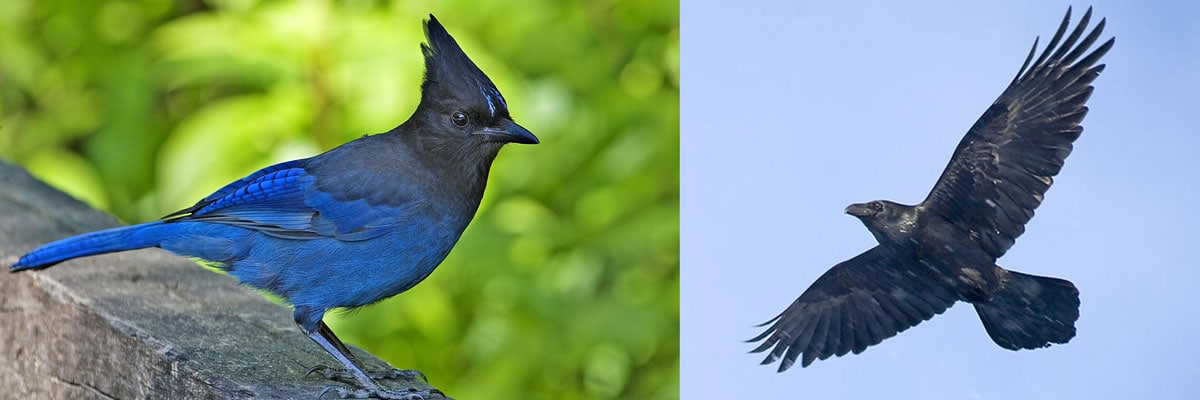
Summary
The father and daughter team of Dennis and Jessica Beebe love everything thing about the natural world available in Santa Barbara County and beyond. Both serve as docents for the UC Sedgwick Reserve in Santa Ynez and the non-profit educational organization NatureTrack based in Los Olivos. Dennis and Jessica also volunteer at the UC Coal Oil Point Reserve located on campus.
After completing a career in the United States Air Force and later as a consultant to the aerospace industry, Dennis has devoted himself to his love of the outdoors and nature education. In this, his latest career, he considers himself as a “generalist” and a work-in-progress. In preparing this presentation he has relied exclusively on his older daughter Jessica both for her birding knowledge, her research tenacity, and her computer expertise.
Jessica’s consuming passion is birds and birding. She reads bird guides for pastime—and remembers everything she reads. With her parents support, Jessica has traveled extensively to birding hot spots in the US and elsewhere, including New Mexico, Maryland, Virginia, Florida, England, Ireland, Tanzania, Ecuador, the Galapagos Islands and Costa Rica.
Dennis and Jess have prepared their presentation from a slightly different perspective. Knowing that the majority of their audiences would already know the standard bird guide summaries, they have chosen to delve into the fascination that man has held for these birds from the beginning of history and some of the reasons why. Theirs is a multi-media presentation, complete with slides, videos and hands-on bird skins.
Doors open at the Santa Barbara Museum of Natural History’s Farrand Hall at 7 PM, with the presentation starting at 7:30.
Summary
A species reduced to just 22 birds in 1982, the condor population has been rebuilt to over 400 today. But the California condor’s recovery is not quite complete. The Condor’s Shadow will make you appreciate the challenges that remain and the part we can all play in pulling the condor back from the brink of extinction.
Set in the ruggedly beautiful Southern California habitat of the iconic California condor, The Condor’s Shadow explores the great hope and extreme lengths that biologists, zookeepers, scientists and a feisty condor with the Native American name Pitahsi bring to the task of pulling the condor back from the brink of extinction. A story with roots in Santa Barbara history, the film includes segments with the SB Museum of Natural History’s own Janet Hamber and biologist Jesse Grantham, both of whom have lived the story of the Condor since the 1970’s. Beautifully photographed and emotionally engaging this is a film everyone who cares about wild things and wild places will appreciate.
The Condor’s Shadow profiles the ongoing challenge of bringing the iconic California condor back from the brink of extinction. Biologist Joseph Brandt, zookeeper Mike Clark, toxicologist Myra Finkelstein as well as a feisty condor named Pitahsi all contribute to the narrative in a year-in-the-life story of endangered species recovery. With vérité footage shot in the ruggedly beautiful nesting habitat of the condor and interviews with those who have lived the story for more than thirty years, this heart-wrenching and beautiful film will make you appreciate the passion and hard work required to pull a species back from the brink.
Doors open at the Santa Barbara Museum of Natural History’s Farrand Hall at 7 PM, with the film starting at 7:30.
More information available on the Condor’s Shadow Flyer. View a trailer at www.TheCondorsShadow.com/

Join Santa Barbara bird and botanical enthusiasts Satie Airame and Jeff Chemnick for an exciting photographic tour of trips to Belize, Bolivia and Ecuador. The couple visited these countries over the last several years in their quest to explore a variety of neotropical habitats.
In addition to Satie’s wonderful photos of “difficult to see let alone photograph” birds are images ranging from spectacular Andean vistas to steaming Amazonian rain forest. Bolivian birding highlights include Many-colored Chaco Finch, Red-fronted Macaw, Red-tailed Comet, and Andean Condor. Belizian bird specialties include Lovely Cotinga, Red-capped Manakin, Royal Flycatcher, and Ornate Hawk-Eagle. Some of the more remarkable Ecuadorian birds are Rufous Potoo, Golden-collared Toucanet, Sword-billed Hummingbird, and Scarlet-breasted Fruiteater.
Jeff Chemnick is a cycad specialist and Research Associate at Lotusland and a keen international birder. Satie Airame is the Assistant Dean for Academic Programs at UCSB’s Bren School of Environmental Science & Management and she enjoys taking photographs of birds and plants in their natural habitats.
March 26 at Farrand Hall at the Santa Barbara Museum of Natural History. Doors open at 7PM, program to begin at 7:30.
Photos: Red Capped Manakin at Chan Chich Lodge, Belize by Satie Airame.

